Welcome to Weblogs at Harvard Law School. This is your first post. Edit or delete it, then start blogging!
April 18, 2007
October 5, 2005
Panamania ends
I am sitting at my dining room table in Cambridge writing this, and marveling how little anything changes when you leave for a year. I am really happy to be back here, and excited about living in Cambridge again, but am still feeling a bit alien. The weather is gorgeous (for October in the northeast) but still feels too cold for me if I’m not in the direct sun–I’m going to be trouble when it actually starts to get chilly. After a year and a half of hiking around the jungle on most days, I’m also feeling hugely under-exercised. I have this urge to walk that is making it difficult for me to sit still–so yesterday I exhaustively cleaned the kitchen as antidote–how weird.
I’m even beginning to miss watching the capuchin monkeys. Because I was working with so many monkeys in so many social groups, I don’t really have the sense of knowing individuals the way a lot of primate field people do, but capuchins have a certain mischievous air which is endearing, and very funny to observe. As boring as watching monkeys for 8 hours a day can be, I’m going to miss the lifestyle, and the very funny moments (like the juvenile capuchin swinging a baby coati by its tail) that make the long days worthwhile.

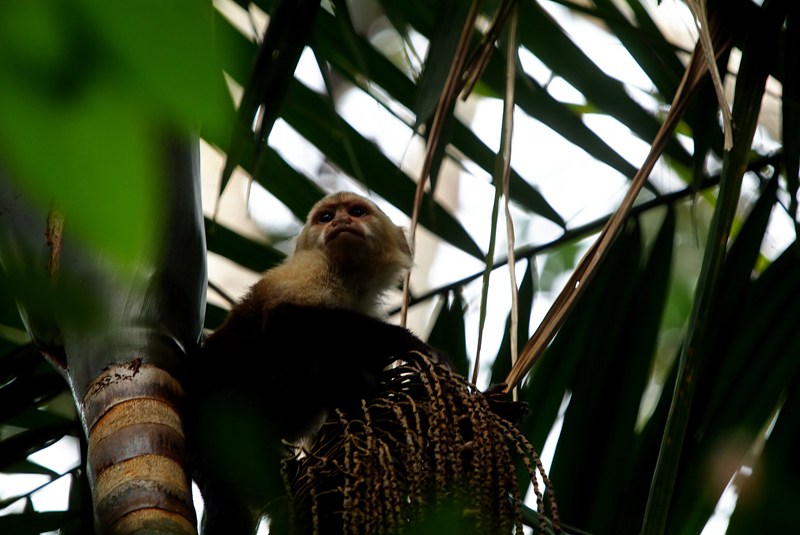
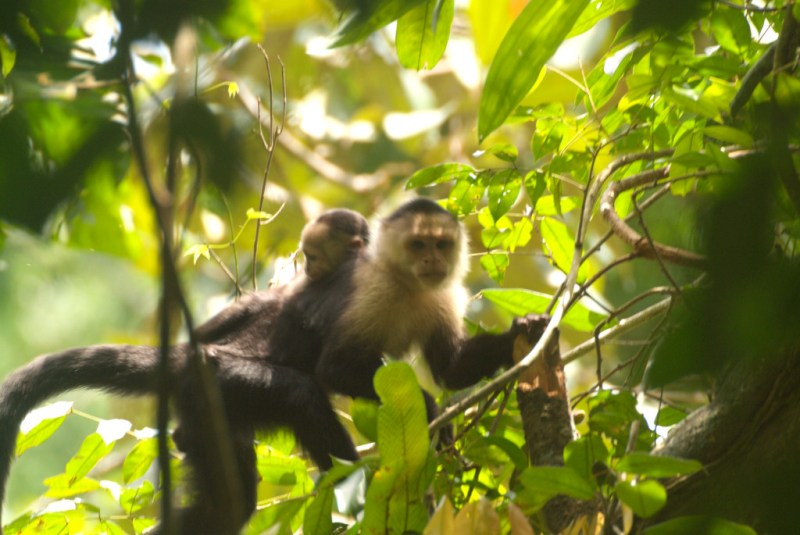
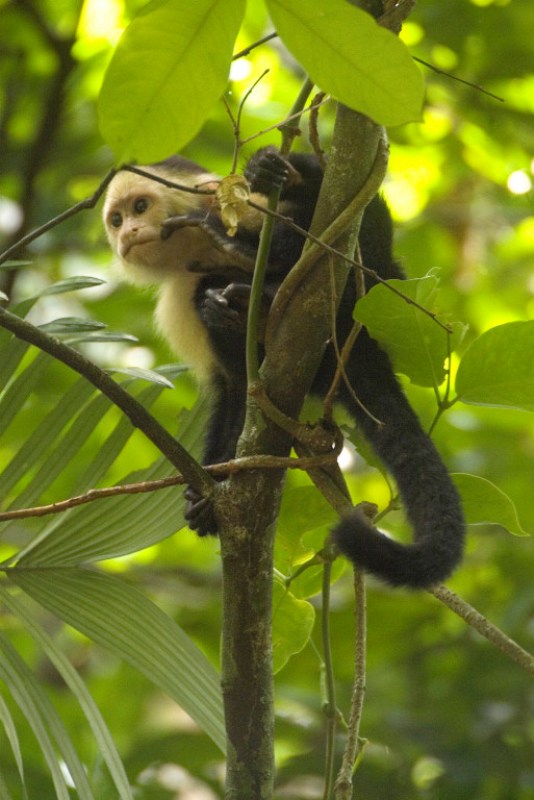
BCI was also a really exciting place to live if you like cool animals and plants–there was something new to be seen every day.
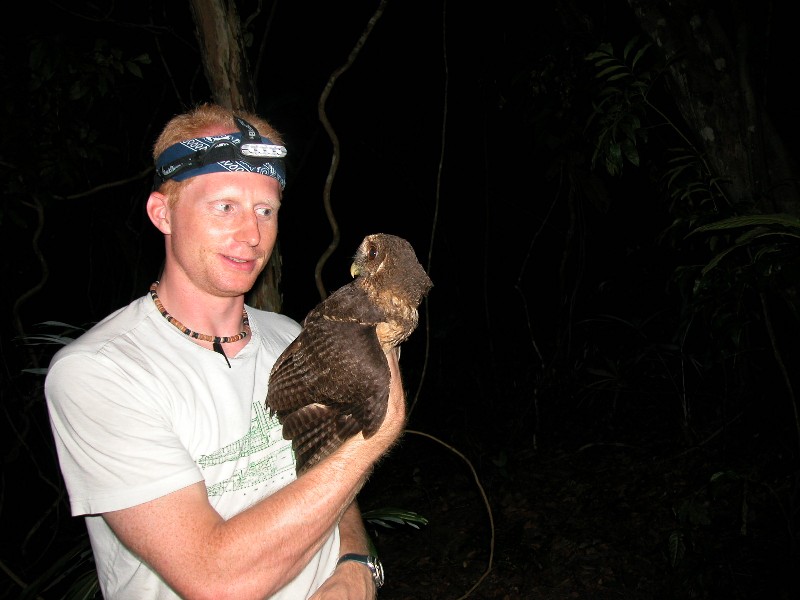
Christoph and an owl that got caught in his canopy mist-net.
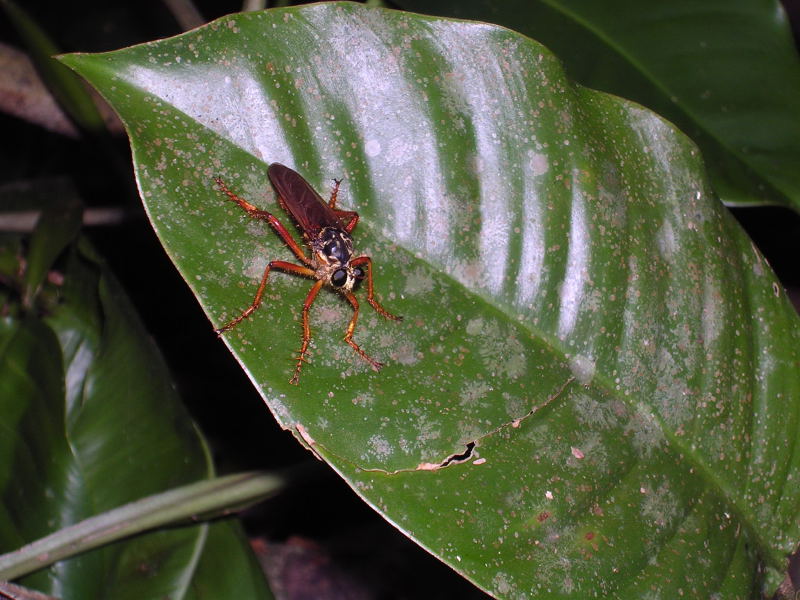
A huge bug–I know, I should know the name, but. . . .
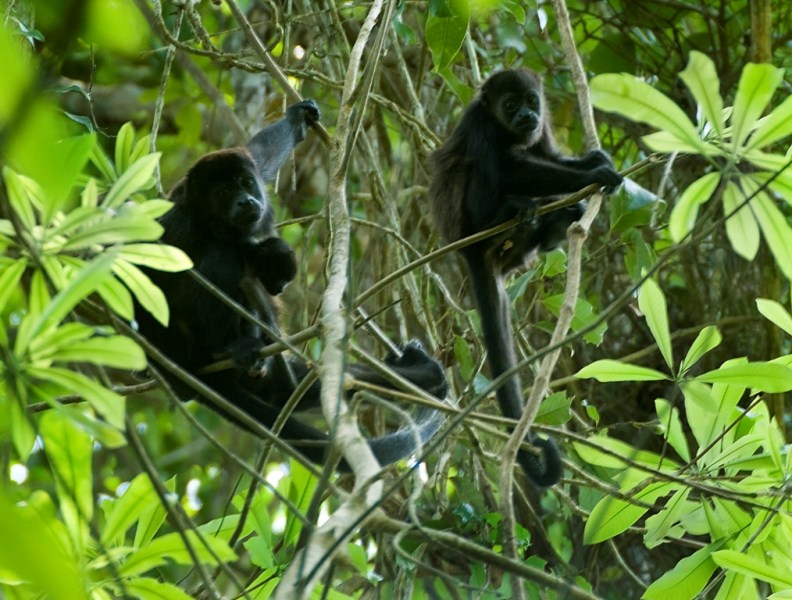
My alarm clock–I can’t really say I’ll miss them.

A cool moth outside my room.
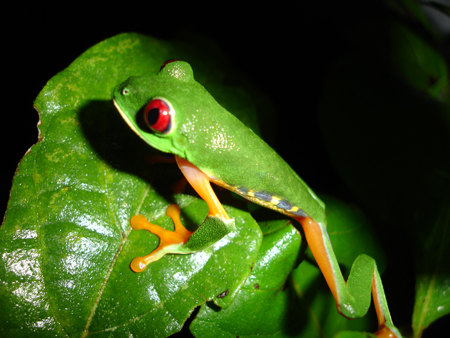
Red-eyed tree frog

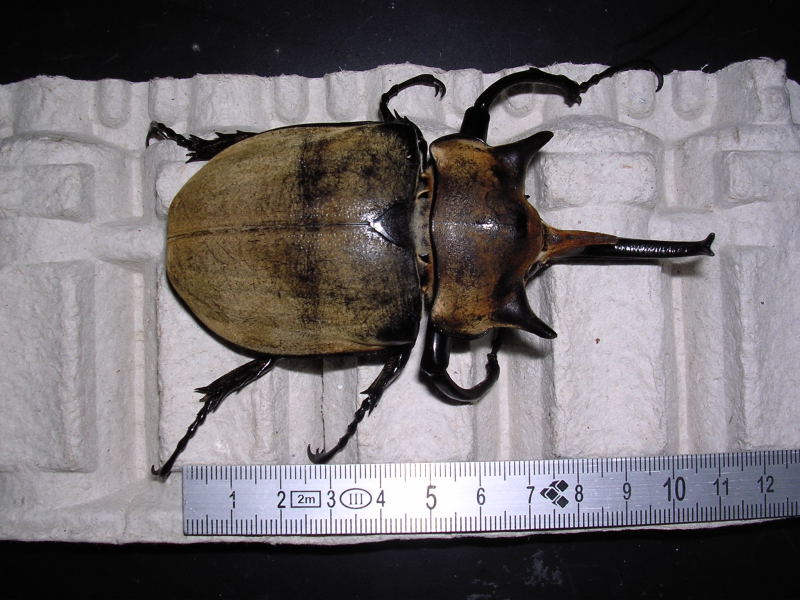
Isn’t this rhinoceros beetle amazing!

The webs of these Nephila (golden-orb weaver spiders) were so strong you practically bounced off them when you ran into one in the forest.

You’d think if you were a bird nesting on the ground, camouflaged eggs would be a better idea than bright blue eggs. With Tinamus, it is the male who sits on the eggs, and I wonder if the bright blue eggs aren’t a way for the female to coerce to male to stay put.
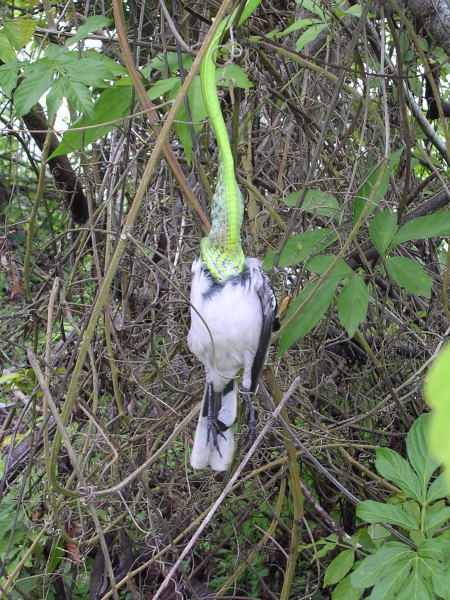
I think these vine snakes are so beautiful–although less so when they are stuffed with bird.
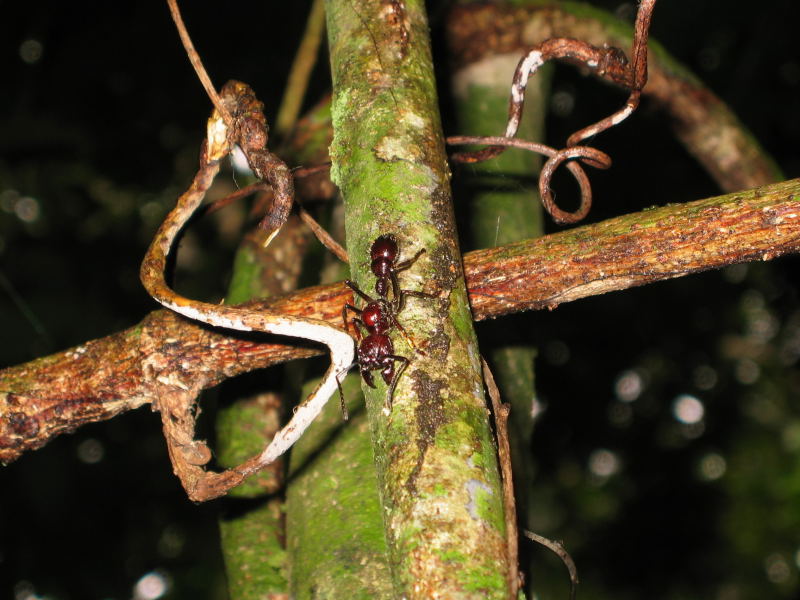
I managed to get through my time in Panama without being stung by a bullet ant. My friend who was stung described it as feeling like her hand was being slammed in a car door, every few seconds for about 6 hours. I only had one run in with Paraponera–I was watching capuchins, leaning against a tree, and started to hear this angry buzzing noise. I was looking around for a hornets nest, and when I looked down at my feet, realized I was standing in a Paraponera nest, and about 20 of these guys (the biggest ant in the world, about an inch long) were swarming up my boots. I squealed and went dashing off desperately trying to get them off my legs. No bites–thank god for knee high rubber boots.
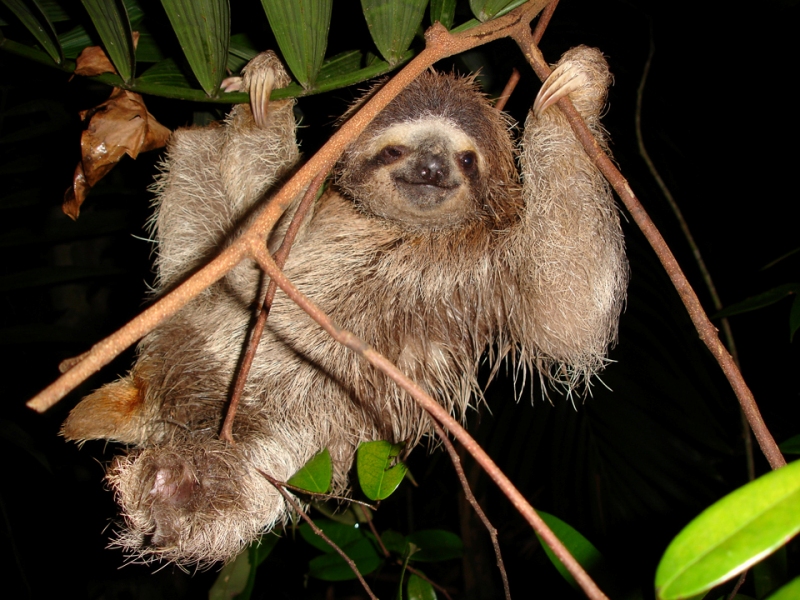
Sloth–or lazy monkey in Spanish.
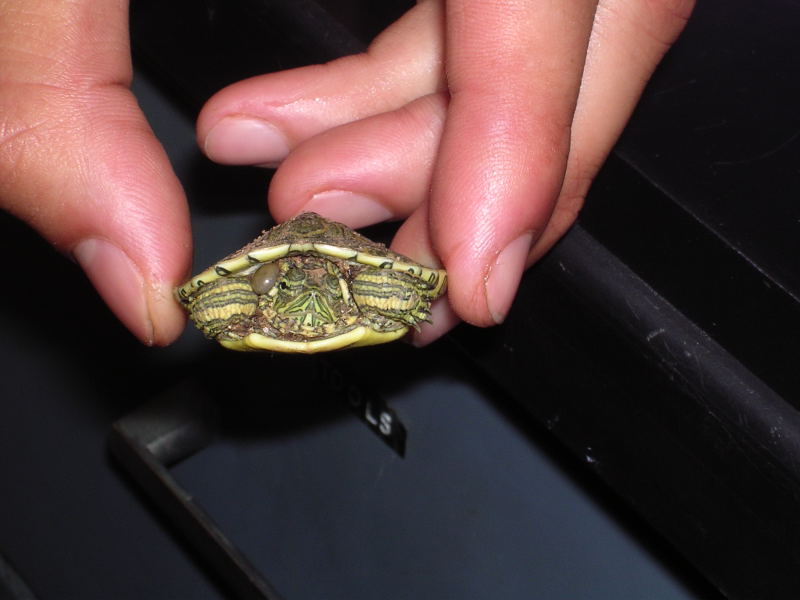
A baby turtle, with a huge tick.
My last week in Panama, I went mist netting with my friend Christoph who studies bats. He works insane hours–4 pm until 8 am. I don’t know how he does it–it ruined me for days. I had a great time though, and saw a lot of cool bats. Christoph also gave me some photos of other bats he has caught:

Diclidurus albus–the ghost bat.

Ectophylla

This is Vampyrum spectrum–the falsevampire bat–not a bit scary looking!
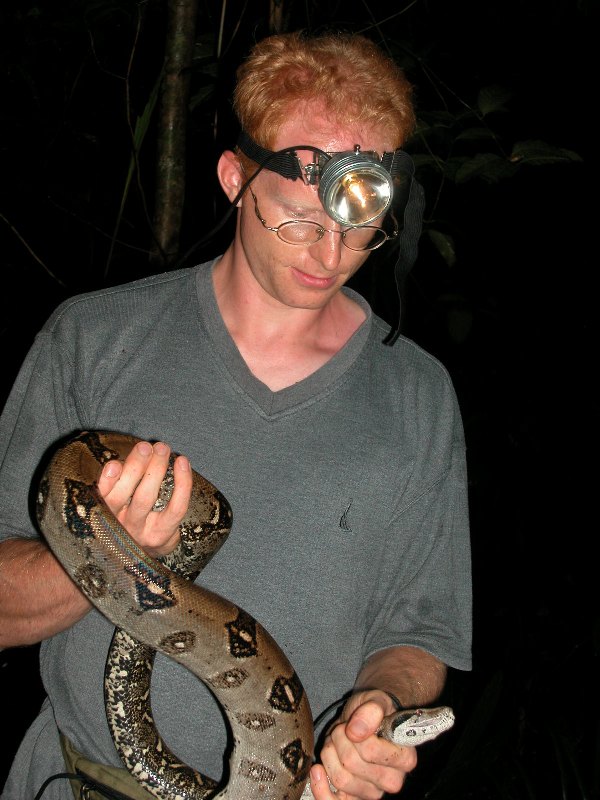
and this boa wasn’t supposed to get caught in the net!
BCI was also a great place to learn about tropical forests. There are so many people working on different aspects of the forest on BCI, that you can find someone to answer almost any question.

As part of my project, I had to identify a lot of fruit
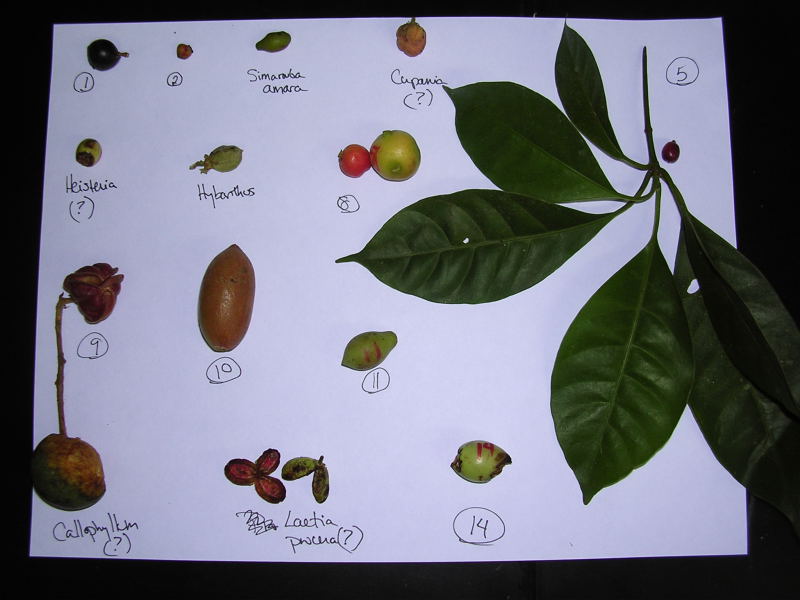
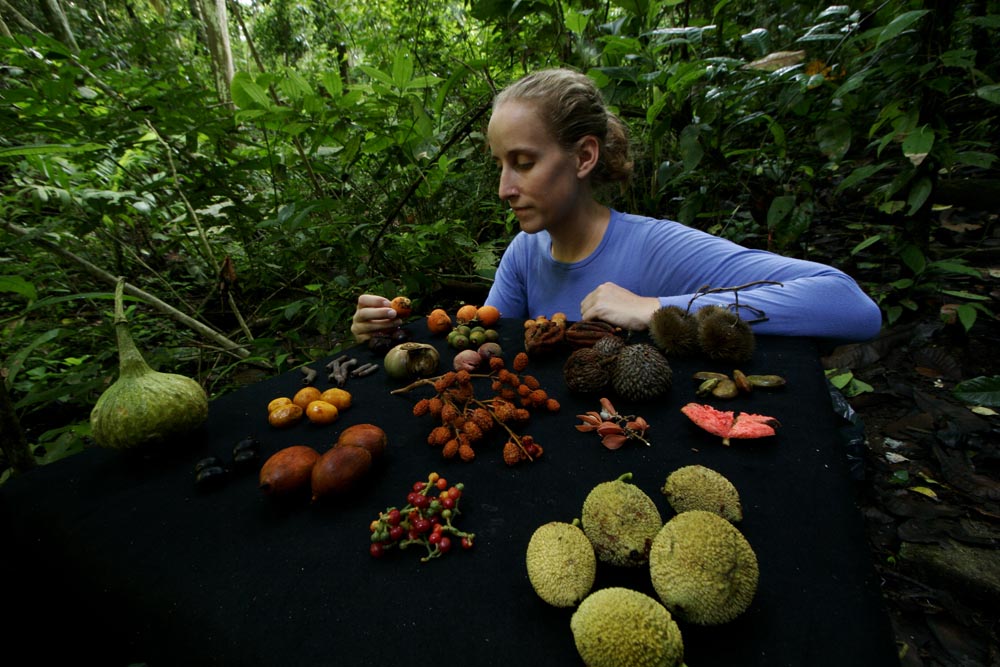
and was perpetually amazed that not matter what I brought him, Oswaldo Calderon could help me identify all of it. I feel very privileged to have had the opportunity to work with many of the people on BCI. This especially includes Vilma Fernandez:
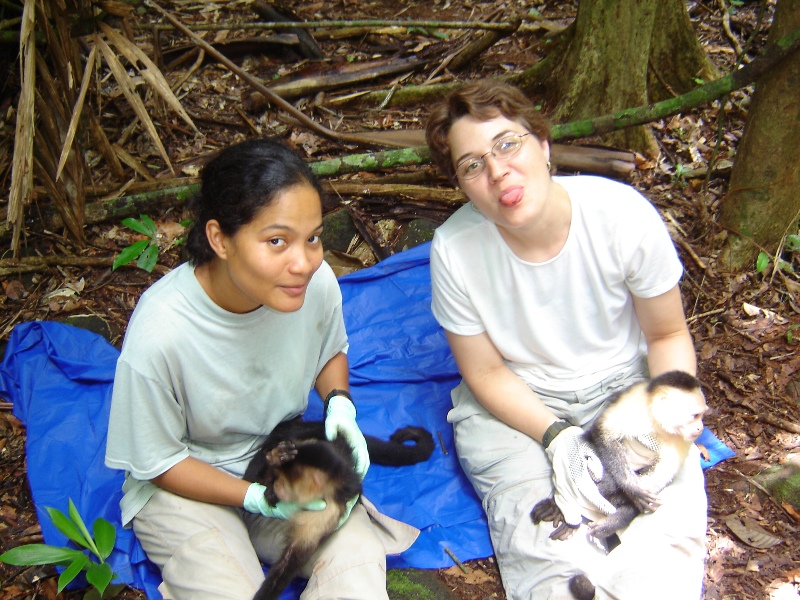
Vilma on the right. (Ok–I’ve gotten a lot of emails correcting me on this. Robyn Hoing is on the right, Vilma is on the left. This is a manifestation of my left/right dyslexia, not my inability to recognize my friends).
Daniel Obando and Pablo Flores

I’m really going to miss everyone from BCI–We had a lot of really good times.

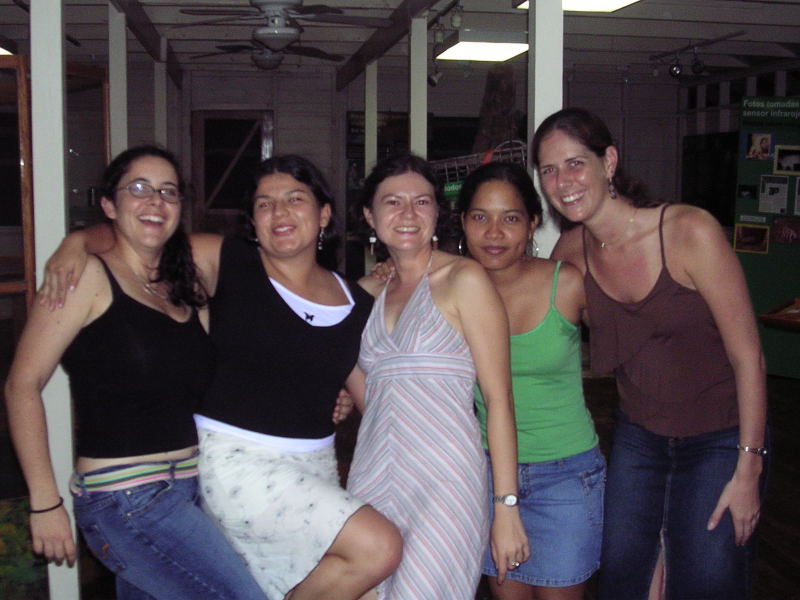
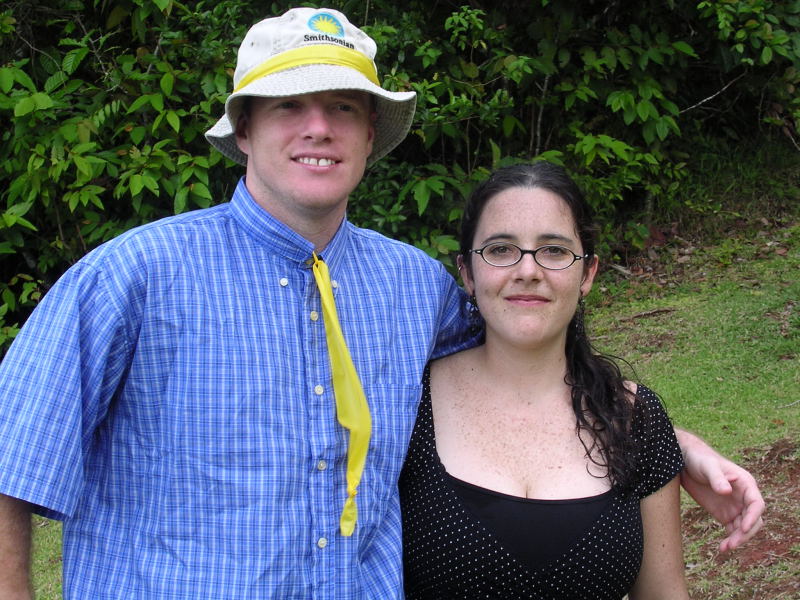
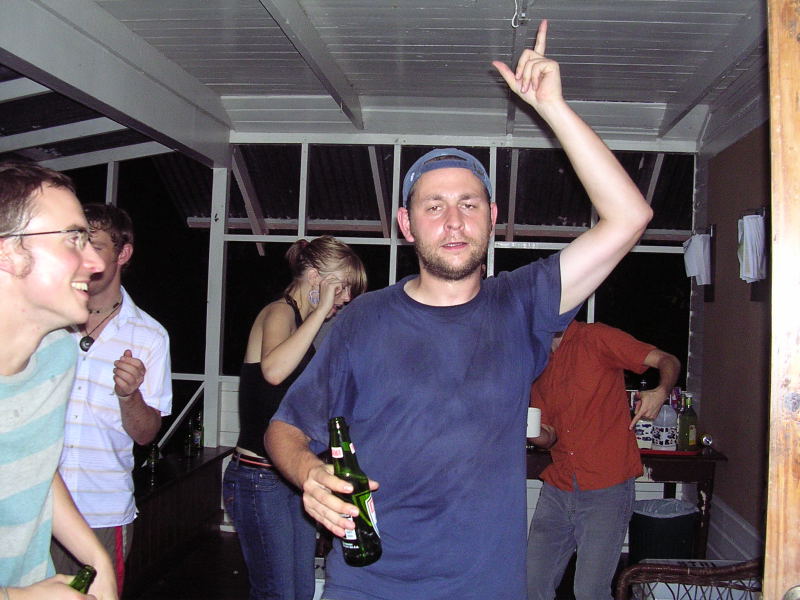
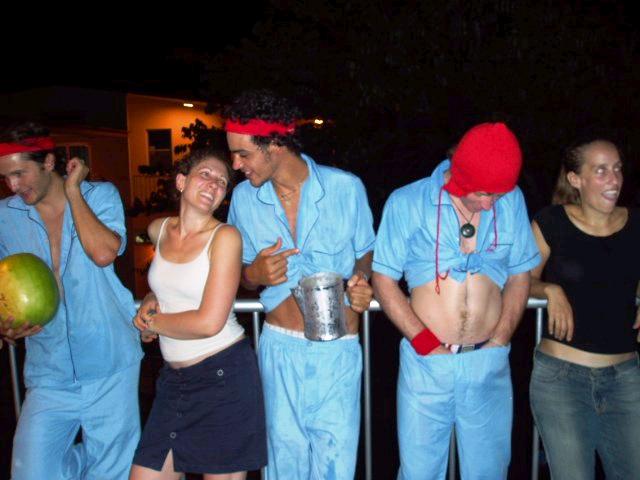
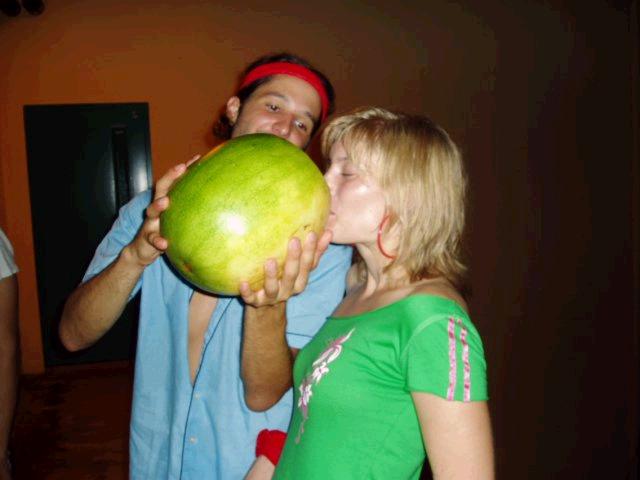
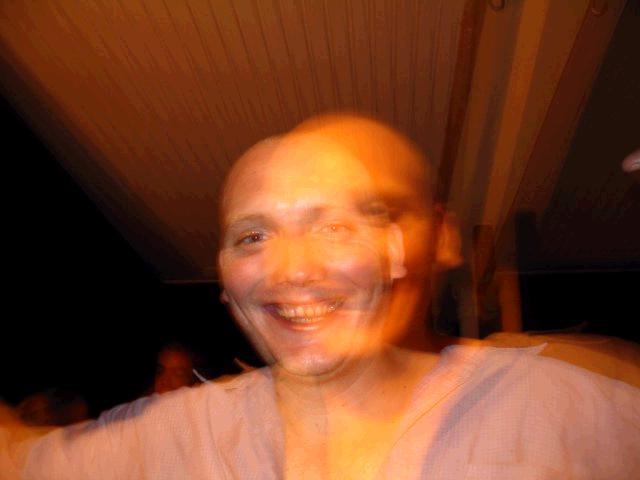

So, I’m done watching monkeys for the moment, and as a friend so helpfully pointed out “now all you have to do is write 200,000 words”–friends are such mixed blessings.
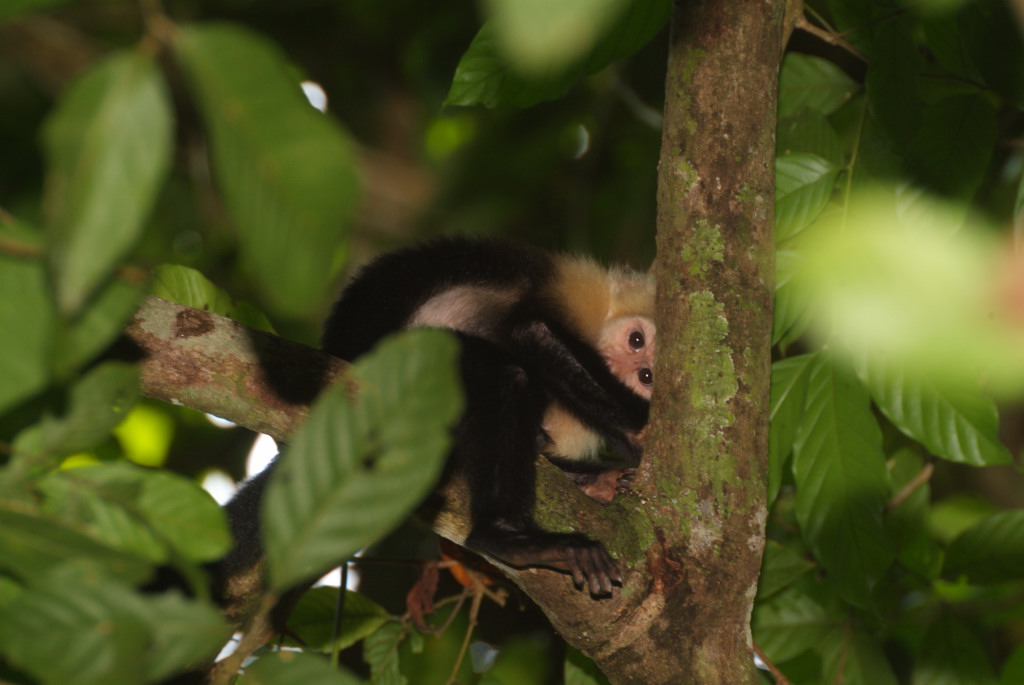
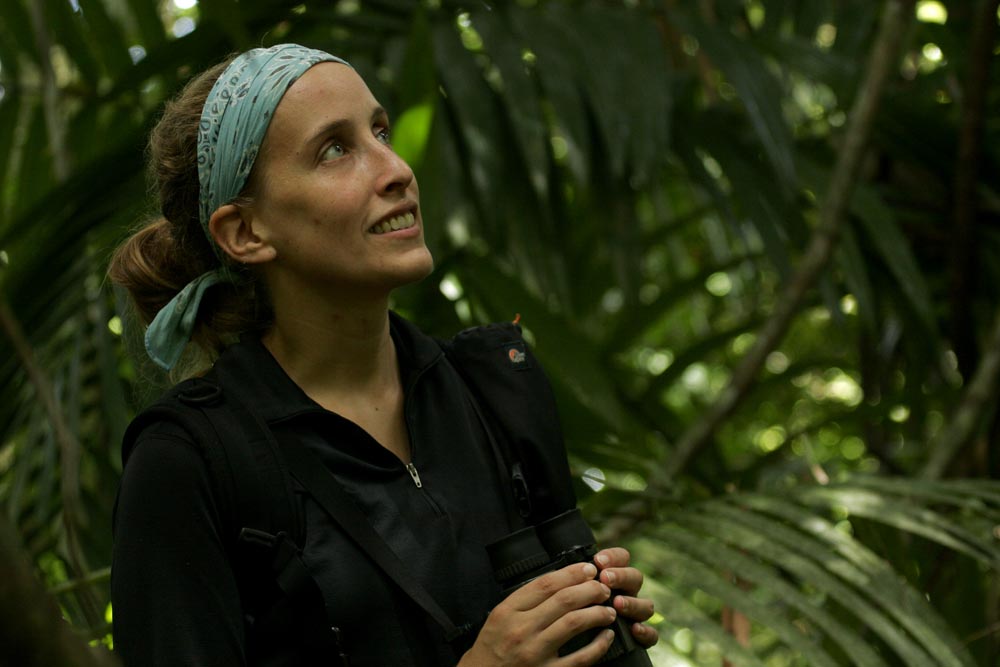
September 27, 2005
Last time’s the charm?
My project is over, and I am leaving Panama in so few days it can now be reasonably counted in hours. Vilma and I are done following monkeys, counting fruit on trails, scraping pulp off of seeds, and are now packing up our lives. It is astounding the amount of stuff we’ve accumulated, and the things I was looking for several months ago, and finally found.
The real end of the project was Sept 10th, the last day of our last round of monkey darting. Earlier this year, we darted 15 monkeys fitted them with radio-collars, which we had to try to recover.
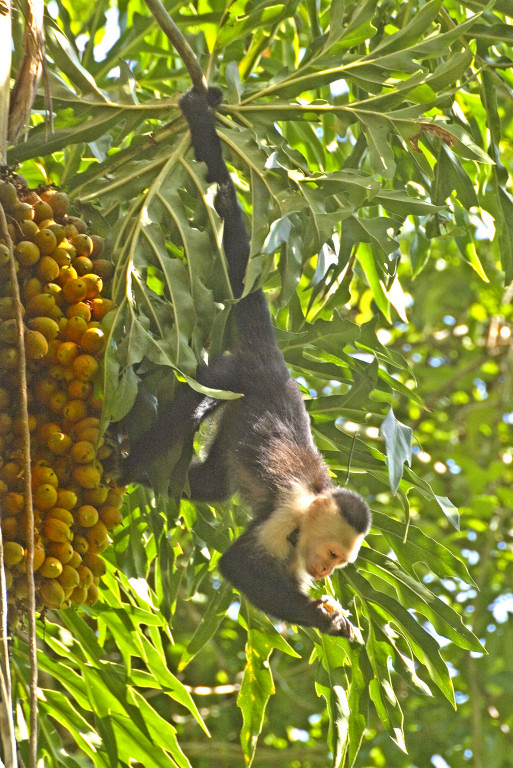
For this final round of darting, I decided that it made sense to collect biological samples to conduct a health analysis. Once again, Bob Lessnau came down to dart for me, but this time, his colleague, Terry Norton, a wildlife vet came as well.
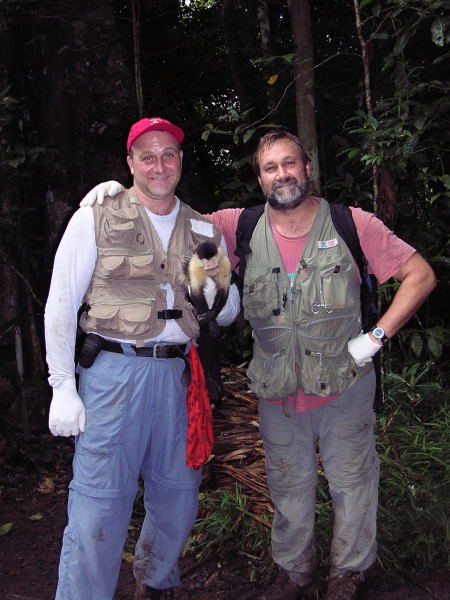
Darting to recover collars is much harder than darting to put them on. First of all, you are aiming for a specific individual rather than any monkey of the right age/sex class. More importantly, every monkey you are trying to catch has already been darted in the butt. I had begun to think that maybe capuchins weren’t really as smart as everyone says–they rehabituated to Vilma and I so fast after being collared, and would hang out several meters from us without the slightest sign of being concerned about us. It seemed like they hadn’t really learned anything from the experience of being darted–how wrong was I. In fact, they were smarter than I gave them credit for. Vilma and I were not percieved as threats. One look at Bob, and a collared monkey that had been feeding calmly, down low and out in the open, was all of a sudden 40 meters up in the canopy and a half a kilometer away.
We had a tough week–lots of running after monkeys who were being very uncooperative.
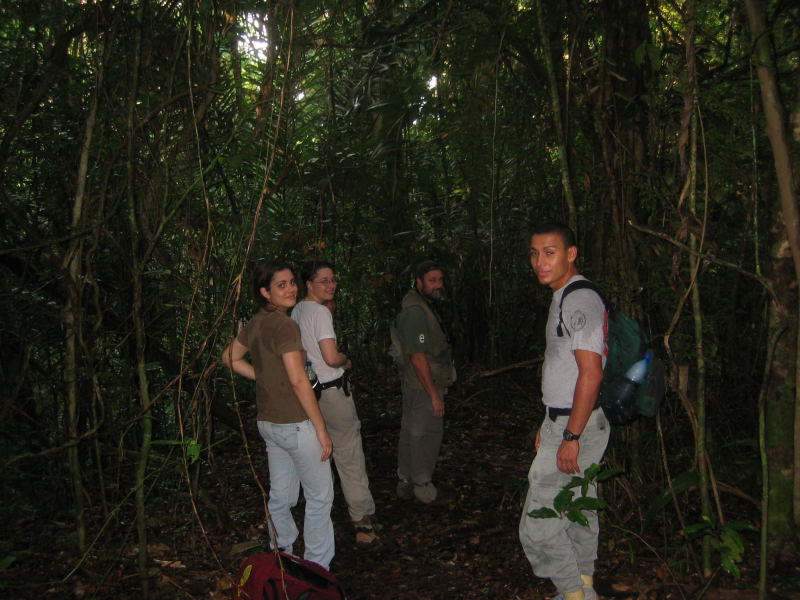
Bob even smoked his good luck cigar early in the week.

Our lives were made harder by the fact that the capuchins were eating Doliocarpus olivaceous–a liana fruit that tends to be really high up in the canopy, and that a couple of the collared females had riding infants, making it impossible to safely dart them.
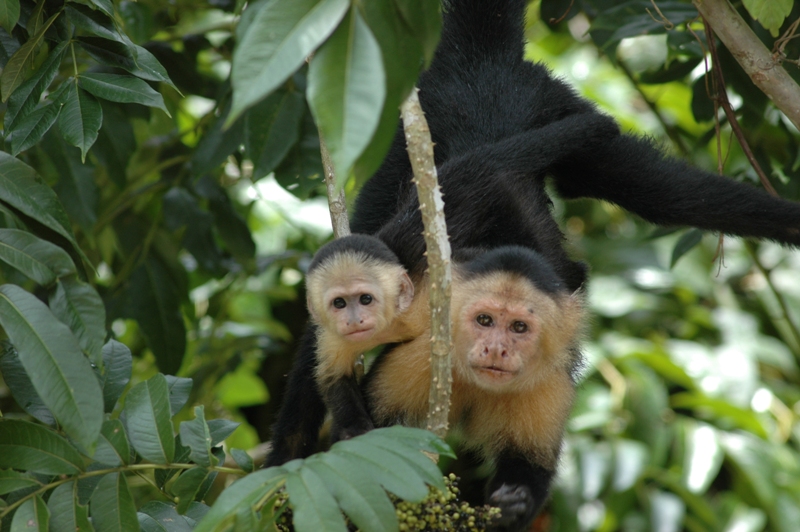
In the end, we ended up capturing some animals for the health analysis, and to train Claudia Branderis, a vet from the University of Panama, in wildlife health techniques. We failed to recover any collars though.
The group of people who helped me dart this time were amazing–it was a real pleasure to work with them. In addition to Bob and Terry, Robyn Hoing came down to help again. She was here for the first round of darting as well.
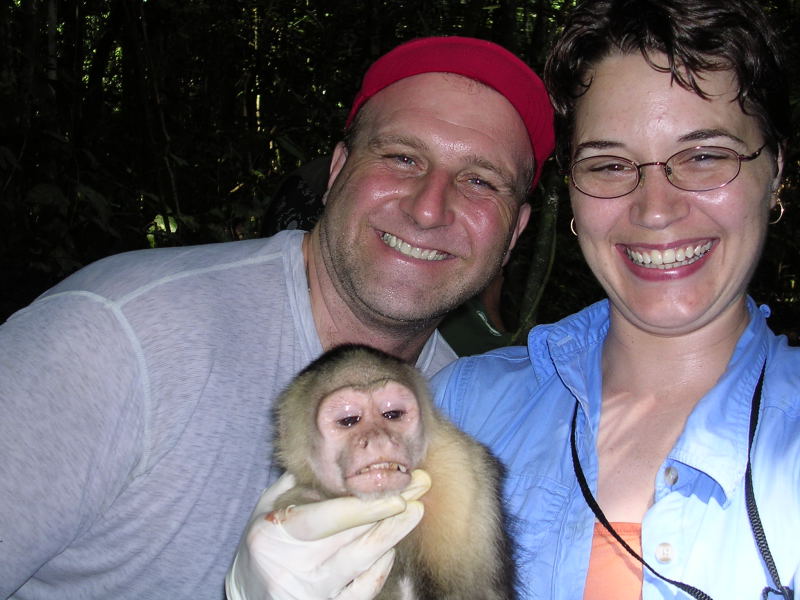
Sheryl Straaden, a large mammal keeper at the Jacksonville Zoo also came to help.
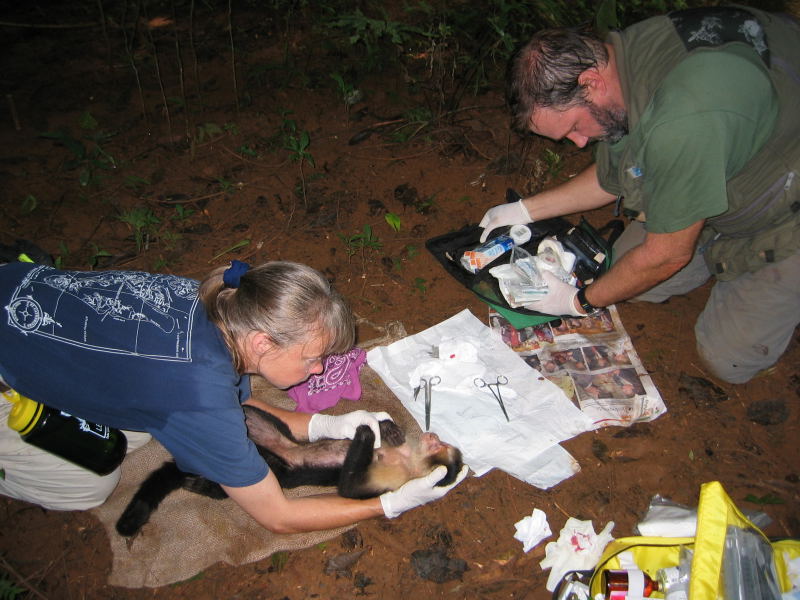
Their experience and expertise working with animals was such a help. I am truely appreciative that they were willing to take vacation time to come down, slog through rainforest, covered with ticks, chiggers and sweat, get totally dehydrated (once again, I had Robyn puking on the side of the trail on the first day–I’m amazed she is still willing to speak with me, let alone work with me again), and be good sports about the whole thing. It was a really great group, and I had a lot of fun working with them!

Vilma and Robyn, hard at work
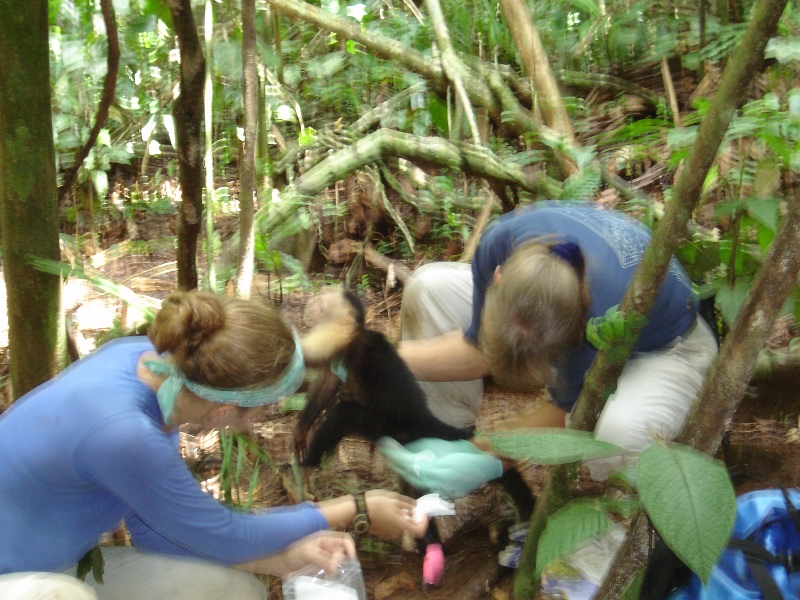
Collecting yet another fecal sample. The first monkey we worked with completely freaked us out because her feces looked like this:
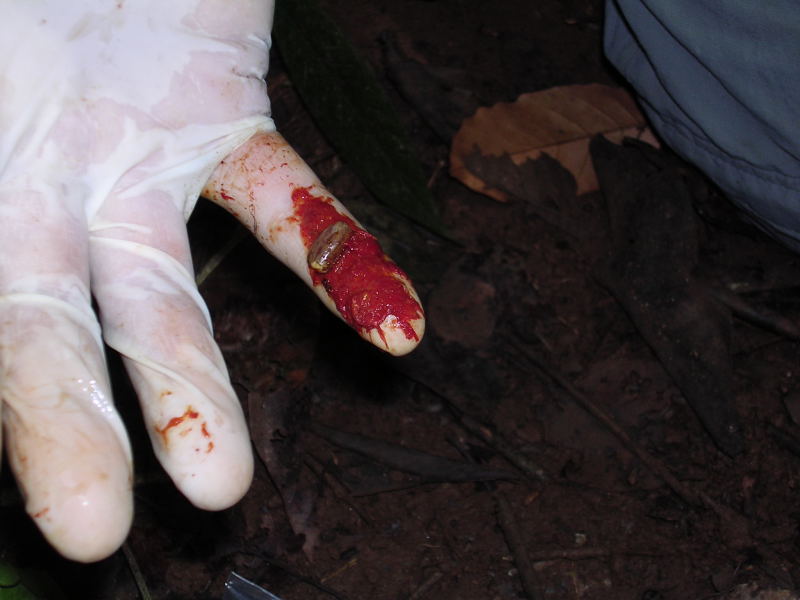
We were worried it was blood, but it turned out that she had just been eating a lot of Trichilia tuberculata, which had turned her feces bright red.
One of the cool things that happened with this round of darting was that we captured a juvenile with ambiguous genitalia–a pseudo-hermaphrodite of sorts.
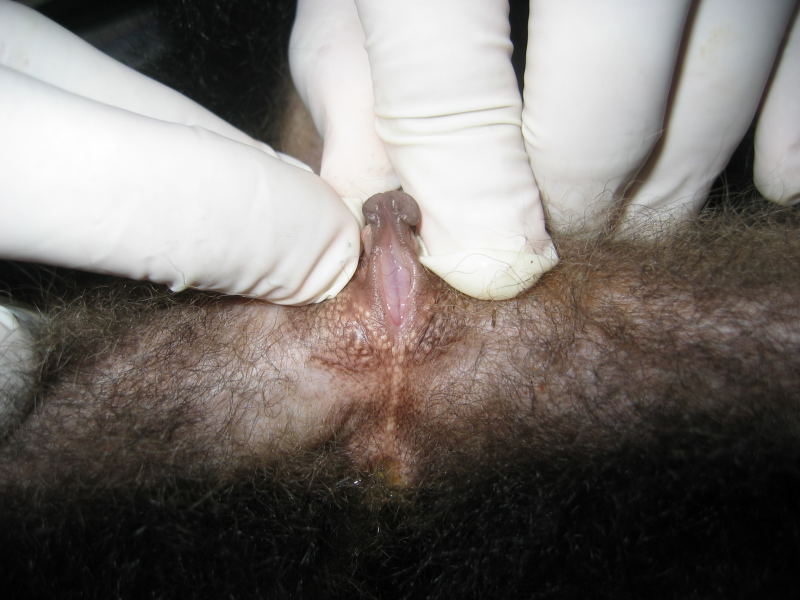
We aren’t sure if SheHe is a male or a female–it will be interesting to see if we can figure out what it going with him/her.
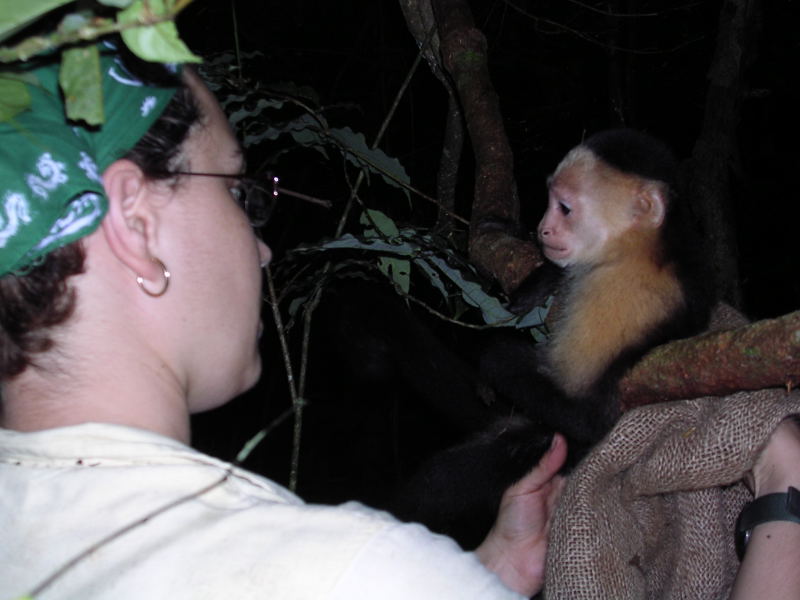
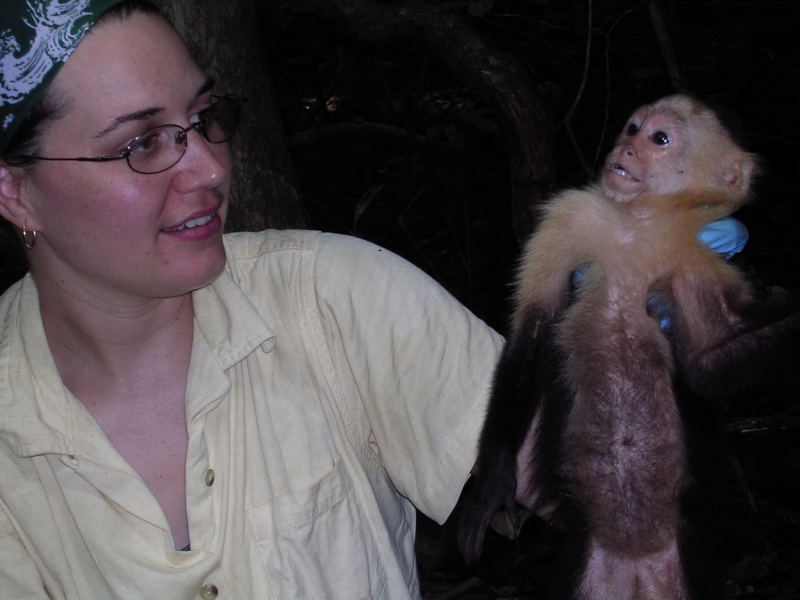
So, depending on how you define success, the last part of this project was either a complete and utter failure, or a moderate success. I prefer to think of it as the latter–we put in our absolute best effort, had fun with the work and with each other, and have some positive results from our efforts!
So, extra big thanks to Bob, Robyn, Terry, Sheryl, Vilma and Claudia!
September 19, 2005
Crabs and simultaneous hermaphrodites
It has been a hectic summer, finishing up the field work for my dissertation, playing with friends, traveling in Panama, and giving my first real talk. It has really started to feel like home here in the last few months, which is typical since I am leaving in less than two weeks. One of the most amazing things about having done my field work at the Smithsonian Tropical Research Institute is the community of scientists that work here. People here have such a diversity of interests, and the cross-pollination of ideas that occurs at Gamboa BBQs or over beers following one of the weekly talks is really exciting. This was really highlighted in a symposium in June, where about 20 different people working at STRI gave talks on their current projects. I gave a talk on some of the preliminary results from my project. . .and once that was over, was really able to enjoy hearing about all the other interesting research that is going on down here.
If you are interested in a brief synopsis of the talks, there was one reporter in the audience:
http://www.thepanamanews.com/pn/v_11/issue_15/science_02.html
One of the talks I enjoyed most was given by John Christy, a STRI staff scientists who works primarily on fiddler crab behavior. (He is one of the few STRI scientists who works on animal behavior, in fact.) His talk was about breeding synchrony in fiddler crabs and limpets. It is often assumed that the advantage to breeding synchrony is that predators get swamped and aren’t able to eat all the eggs or larvae, some of which are therefore able to escape and develop. Another possibility is that synchrony occurs because there are certain environmental conditions that are optimal for offspring survival. Individuals are all cuing on the same set of environmental factors to time their reproduction, and synchrony is a byproduct. He concluded that the latter of these possibilities explained the reproductive synchrony he observed in both the fiddler crabs and the limpets he studies.
After the symposium, I talked to John quite a bit, and he invited me out to Naos (on the causeway in Panama city) to see his research site and study species. I was joined in this little field trip by two post-docs from Australia, Jess and Stu. We had a great time watching (and digging up) fiddler crabs:


We also went down to the rocky intertidal (which looks out to the Bridge of the Americas and all the ships lined up to enter the canal) to see the limpets John has just started working with. They are a really neat story, since they appear to be socially monogamous, simultaneous hermaphrodites. How’s that for a strange breeding system!
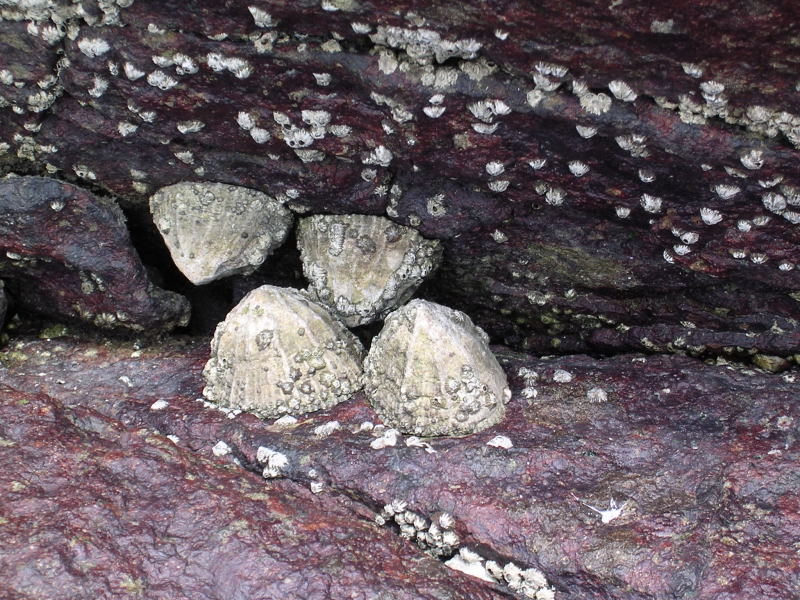
I have to say, after a year of peering through the canopy, trying to figure out what a monkey 20 meters above me is putting in its mouth, the fiddler crabs hanging out on a perfectly flat sand beach in plain sight had quite a bit of appeal!
I’ve also spent some time this summerexploring Panama a bit more. My friend Susy came down to visit me before she headed off to Africa for a year to do her dissertation research. She came and spent a few days with me on BCI
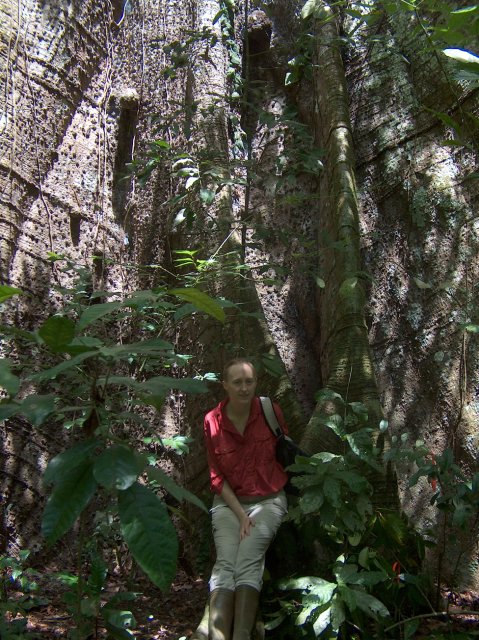
and then we went to the San Blas Islands with my friend Titoche.
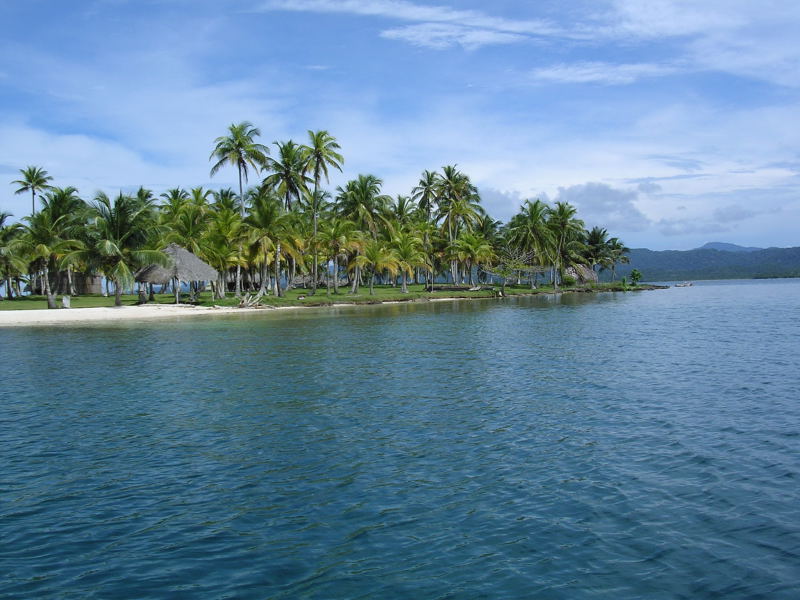
I spent a lot of time in a hammock, reading and sleeping

Basically, the San Blas is a place where you can swim, snorkel, lay on the beach, read and sleep–which is pretty much what we did. There were only two other guests at our hotel, a very nice Swiss-Italian couple, and since Titoche is Belgian, french was the most shared language, so Susy and I struggled along as best we could.
After getting back to Panama City (far to early in the morning), we ran into a bunch of riot police at the bus terminal.
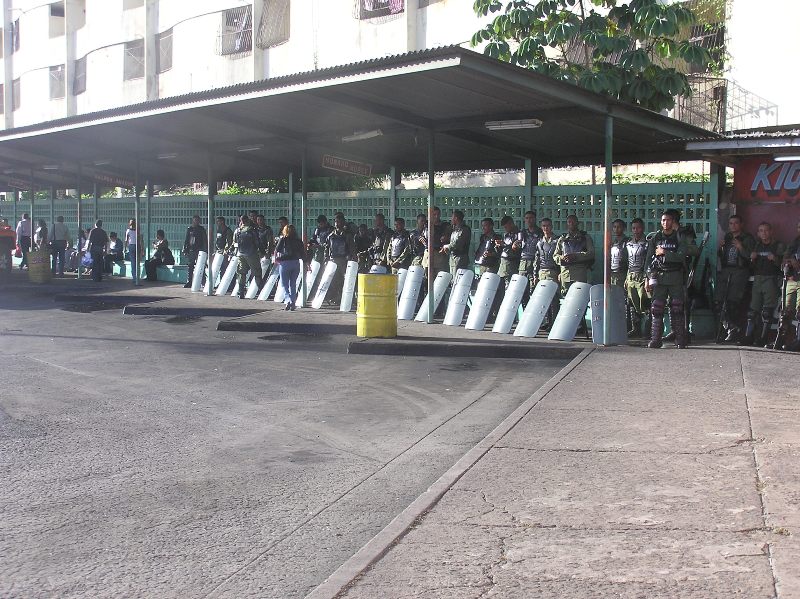
Not unlike the US, Panama’s social security programs are bankrupt and in desperate need of reform. The current government just recently passed legislation that raised the retirement age to deal with the problem. This lead to weeks of protests and rioting. The University was shut, streets were closed, and people were on the streets in both peaceful and not so peaceful opposition to the changes. It made me wonder whether US citizens would react similarly to a raise in the retirement age, or if we are all too apathetic to even bother protesting anything anymore.
Susy and I met up with my friends Vilma, Frauke and Ben, and we headed north to the cloud forest in Chiriqui. The Cerro Punta side of Volcan Baru is my favorite place in Panama.
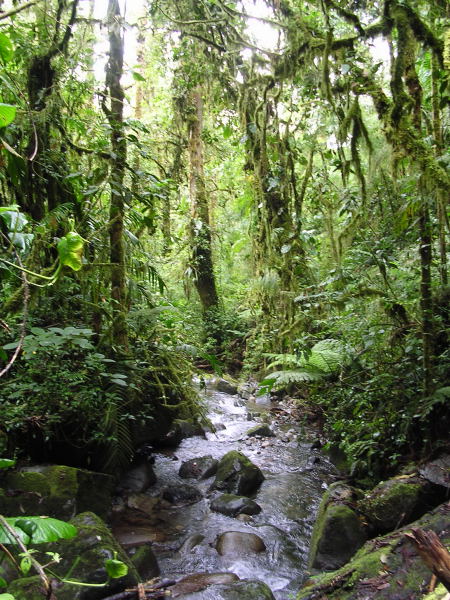
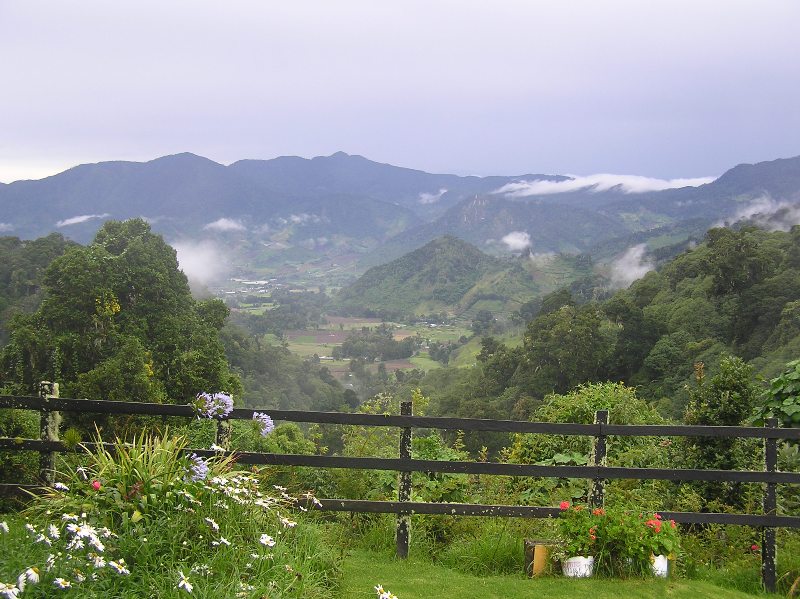
We stayed at the ANAM ranger station at the head of the Quetzal trail. It was amazing to feel cold–
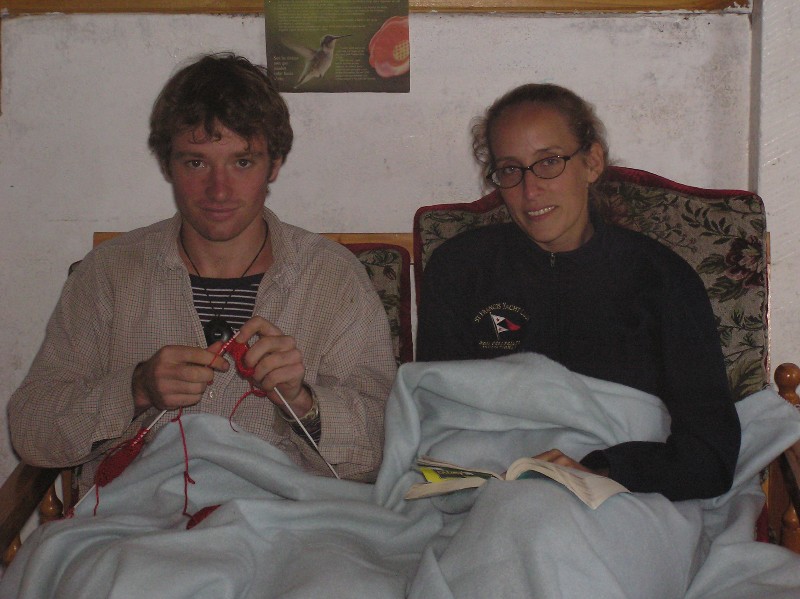
It tended to rain pretty hard in the afternoon, so we would hike in the morning and then read or play games in the afternoon.
“Meg and Susy”

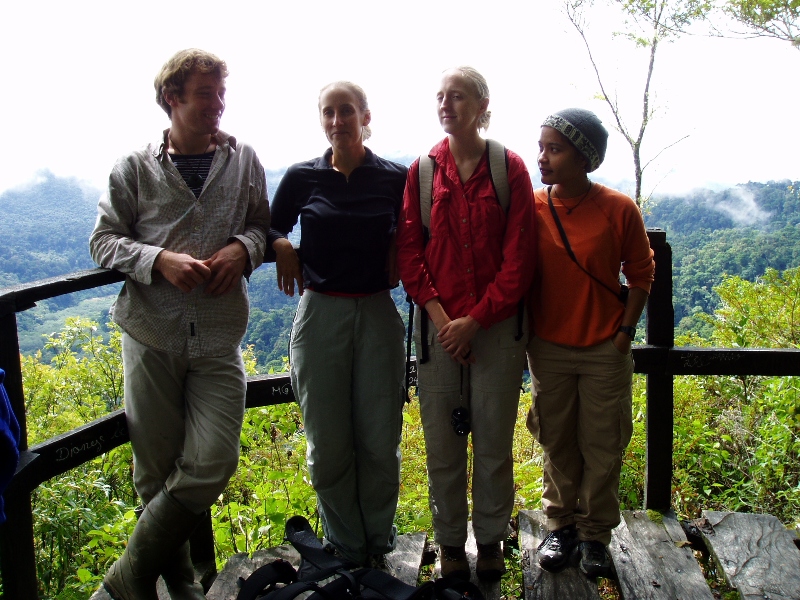
There were a couple of kittens that we also played with:
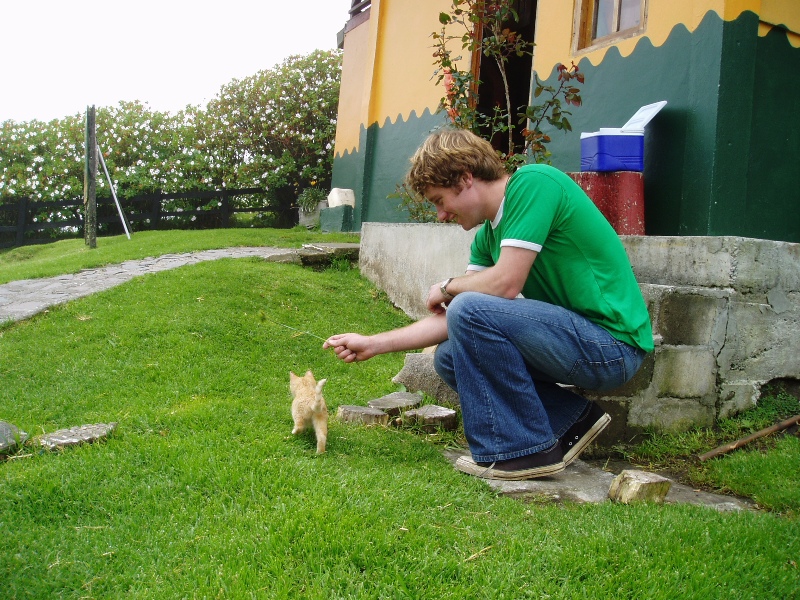
which turned out to be a very bad idea, since everyone but me got ringworm from them. (Doctors at the Mass. General Tropical Disease clinic tried to scare Susy to death by telling her it was leishmaniasis 5 days before she was supposed to leave for Kenya. Reassuring they couldn’t tell the difference between ringworm and leishmaniasis).
This trip was at the end of June, and only two months later, I was back in San Blas, on vacation again! (I swear I was working really hard in between trips!) Frauke was going back to Germany, and she, Vilma and I wanted to take one last trip together.
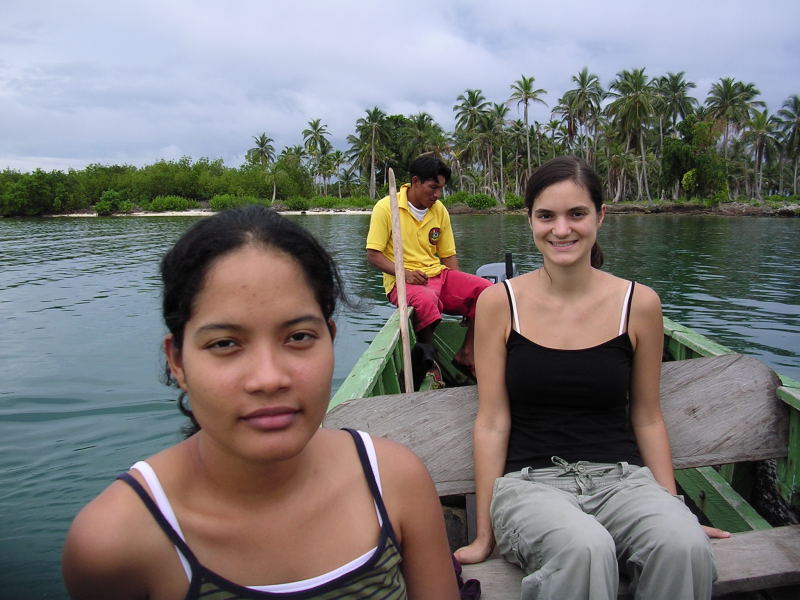
I wasn’t wild about going back to San Blas (it isn’t my favorite place in Panama), but neither Frauke nor Vilma had been, and both really wanted to go. I’m glad they talked me into it, because we had a great time.
We stayed at a place I had never been before, near the community of Playon Chico.

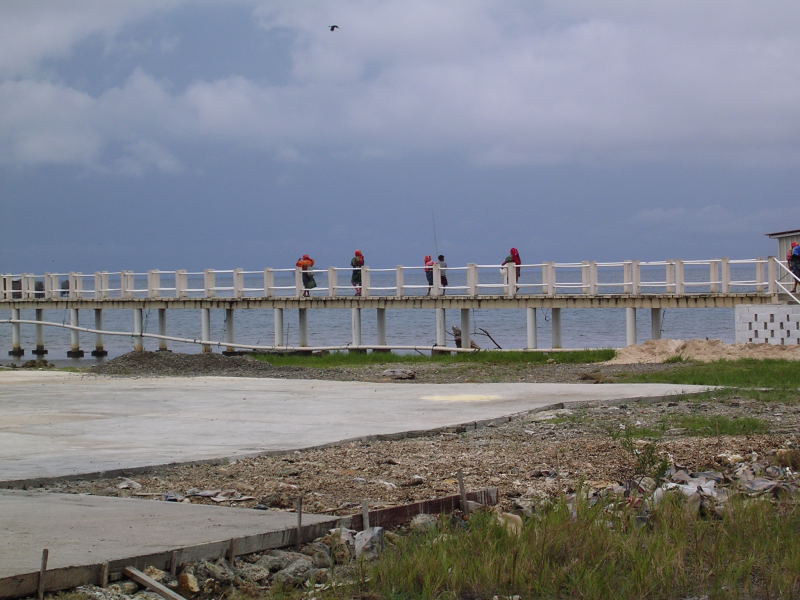
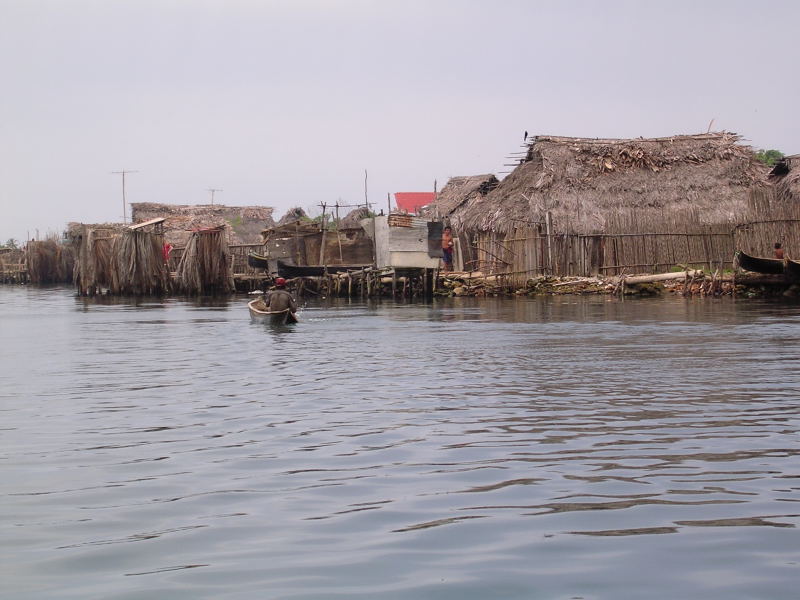
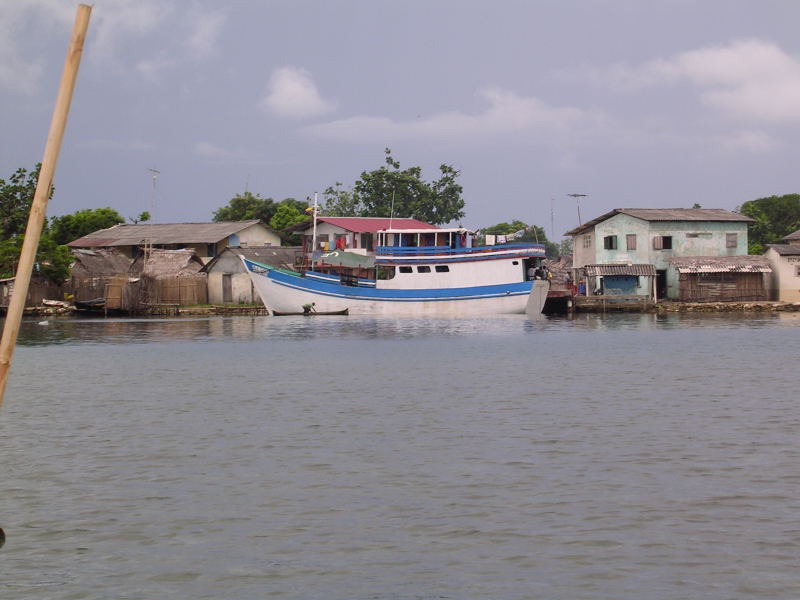
The hotel itself was called Hotel Yandup–just two cabins on a beautiful coral reef island.
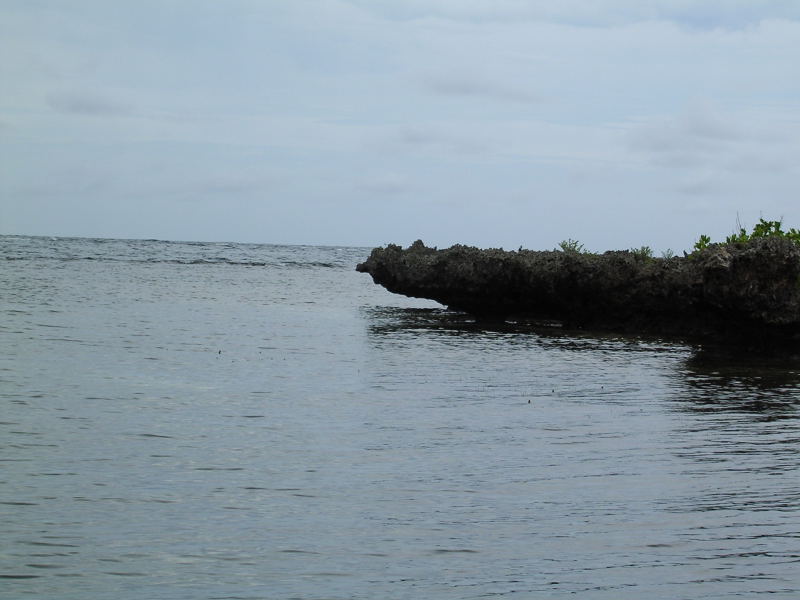

The owners were incredibly friendly, the food was amazing, and the beaches they took us two were breath taking. We had a great time snorkeling, saw some really cool thing
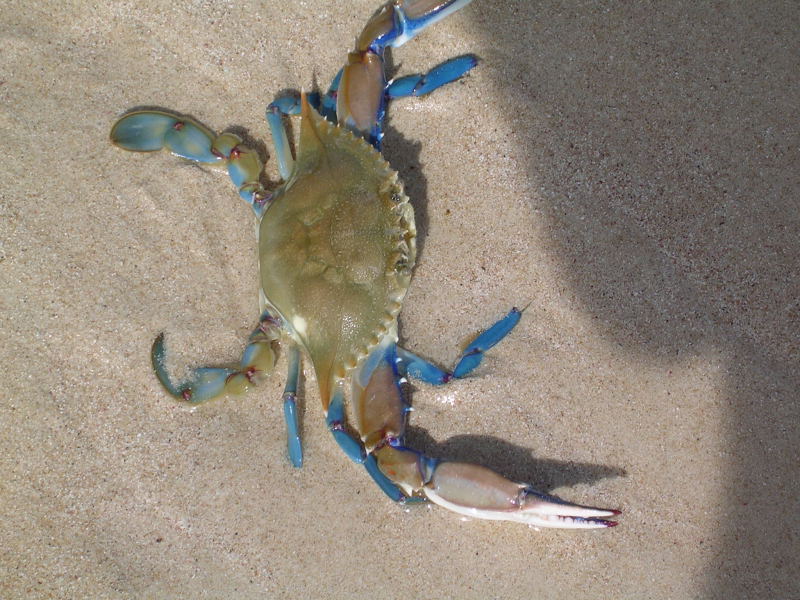
and just generally had a great time.
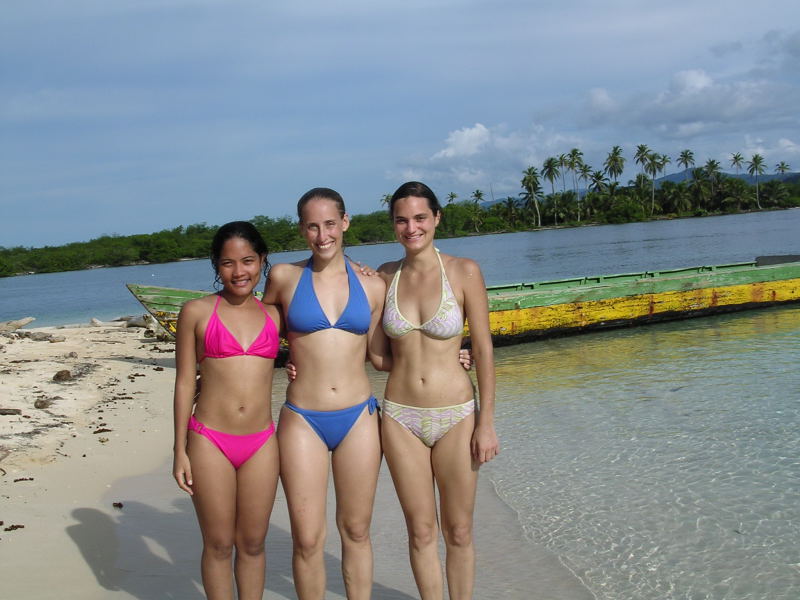
It was great to spend some time with Frauke before she went back to Germany, and the trip provided much needed rest and relaxation because pretty much as soon as we returned to BCI, Vilma and I had to start monkey darting–but more on that later.
June 12, 2005
Derby Day
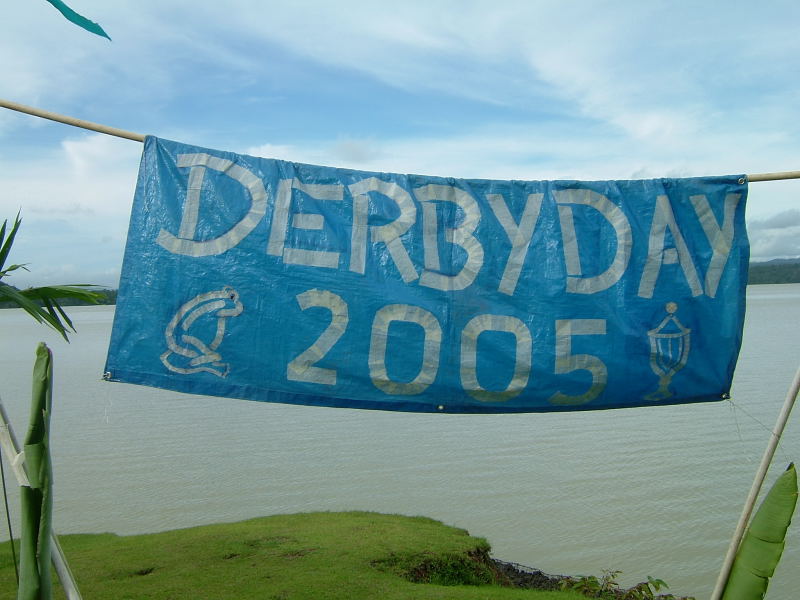
This happened so long ago now, that I’m afraid if I don’t put these
photos up now, I never will. In celebration of the Kentucky
Derby, BCI holds its own Derby Day each spring. It is a chance to
see what everyone on the island looks like dressed in nice clothing,
and not covered in mud.

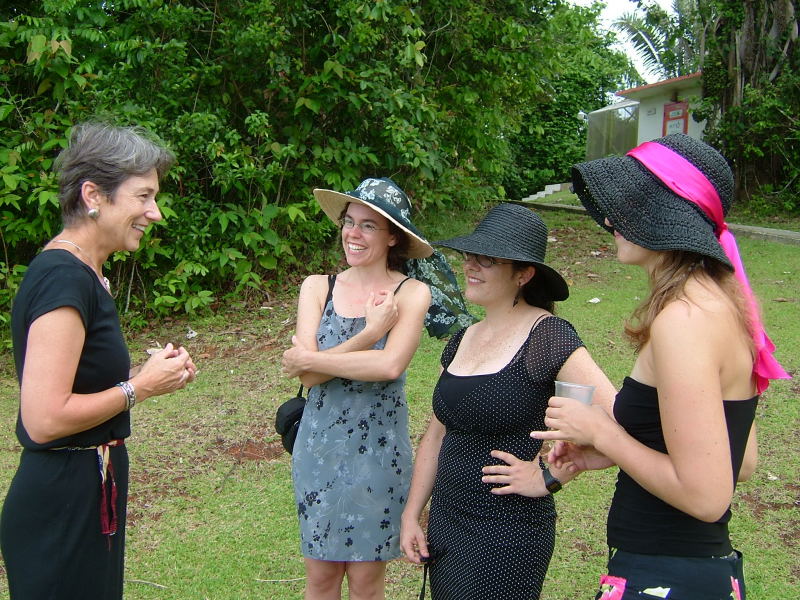
The day started with a delicious crepe and mimosa breakfast, followed by water volleyball in Fairchild cove.
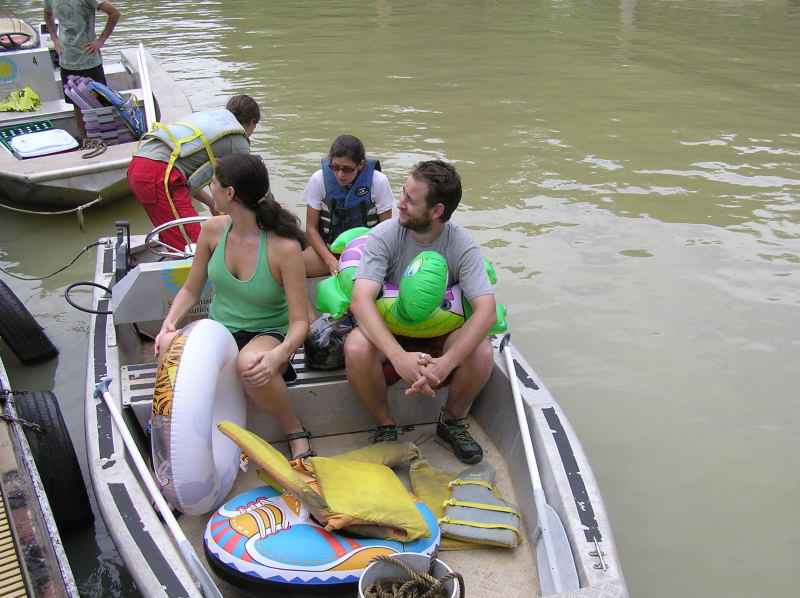
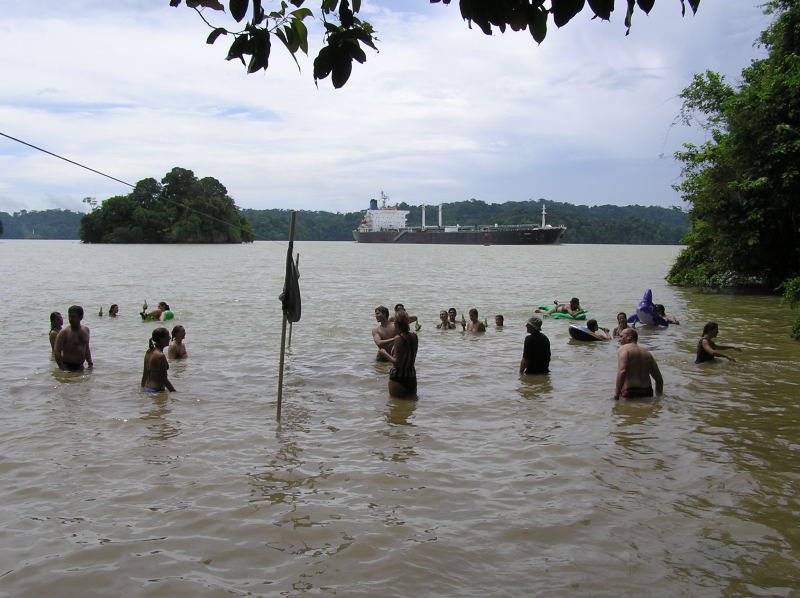
Although, there was more drinking and floating than playing:
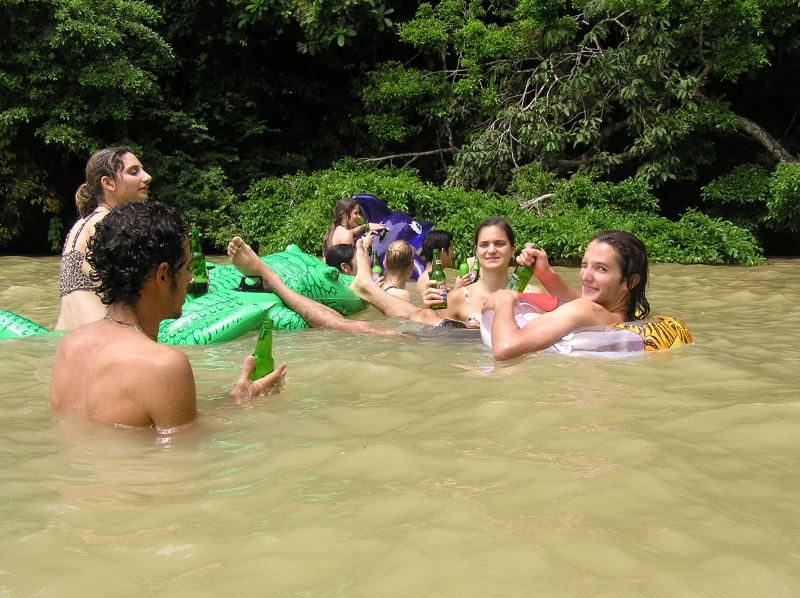
Due to the lack of thoroughbred horses on the island, and the
difficulties of catching enough ocelots to have a competitive field, we
race Bufo marinus, the infamous cane toad.

Click here to see the contestants:
After everyone has selected their toad
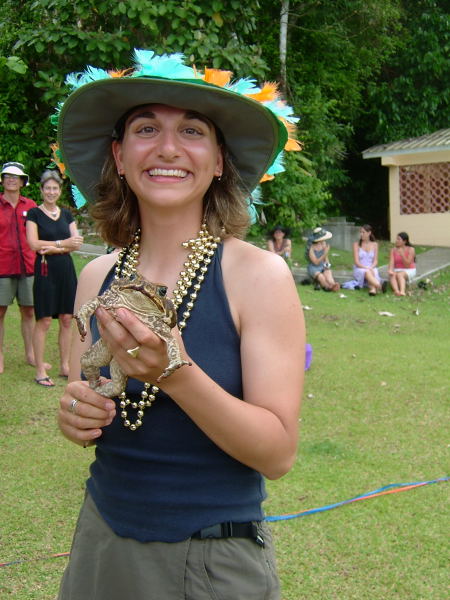
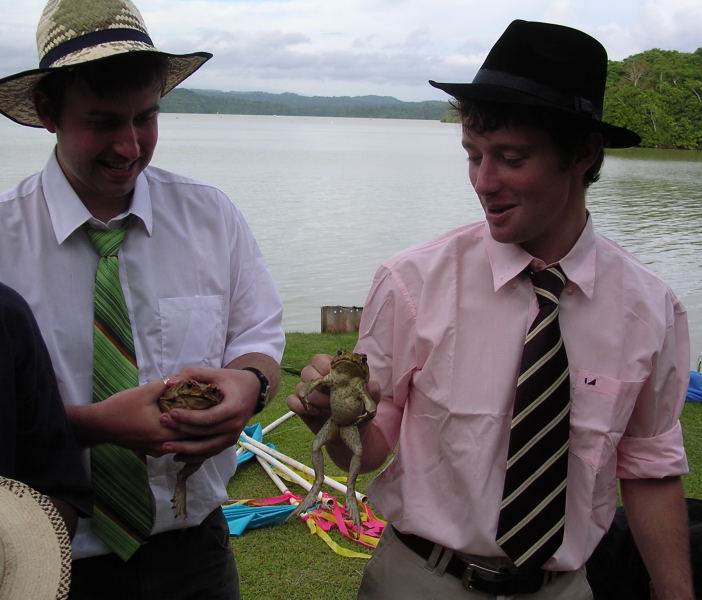
and gotten themselves a mint julip or a martini and a cigar

the racing starts:
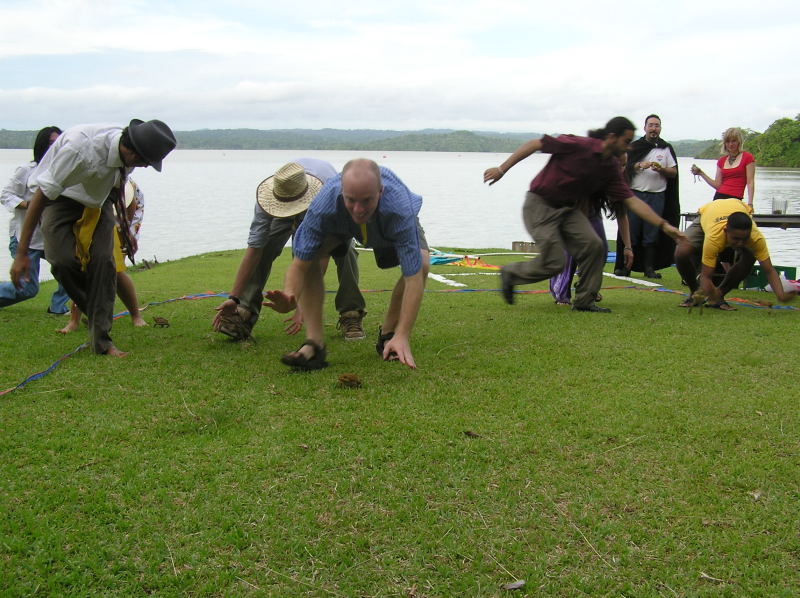
Click here to see the final heat
To finish the evening, there was a BBQ and a party at the Old Dining Hall.
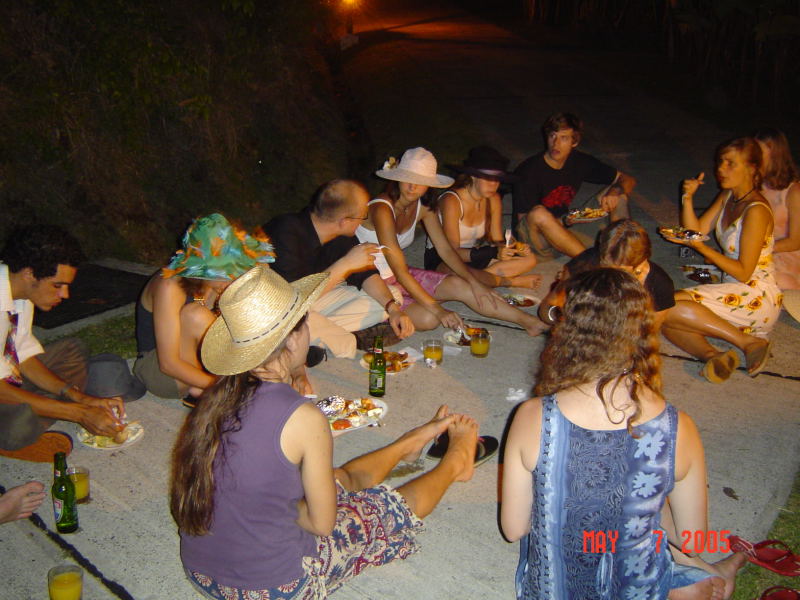
It was a really fun day, except
probably for the toads. However, they don’t seem to have been
done any permanent damage, since there are just as many hanging around
my dorm now as there were before Derby Day!
May 21, 2005
Capuchin calls
My friend Patrick lent me his recording equipment last week, and this
is one of the recordings I made of capuchin vocalizations.
Mostly, what you are hearing is juveniles, but there is one adult “lost
call” (quite far away) at the beginning of the recording. I’ve
been playing around with the idea of trying to run a playback
experiment to tease apart the effects of location and group identity in
intergroup relationships. It sounds like a lot of fun, but I’m a
little worried that side-projects sounding this much more appealing
than my main project is symptomatic of a certain stage of dissertation
research, and I should resist the temptation to dabble. We’ll
see, I guess.
click on:
to play the recording.
April 27, 2005
Vacation!
In the middle of March, my parents and
friends of ours, Steve and Shelley Fein, came to visit me in Panama.
It was my first real vacation since being in Panama,
and I really wanted to use it to get outside the Canal Zone,
and see some of the rest of the country. I convinced everyone that the
best plan would be to rent a car, and drive up the Inter-Americana,
stopping at various places along the way. And so, I dragged my
parents from one end of Panama to the other (well, not quite, as we didn’t make
it to the Darien)–I think they’ve forgiven me, now that all their chigger
bites have healed and they’ve found and removed the last of the ticks.
Our trip started with my parent missing a connection and arriving a day
late. This gave me a day in Panama City
to show Steve and Shelley around. We went to Casco Viejo–the old part of
the city–in the morning. Casco Viejo is a strange mix upscale, renovated
old buildings next to shells of old mansions that no longer have roofs, windows
or floors. It is the location of the president’s residence as well as a
large number of the city’s squatters. It also has spectacular views of Panama
City.
I’d been telling everyone, via email, how amazing the passion fruit
ice-cream was at the restaurant called Crepes and Waffles. We tried to go
there for lunch, but it was closed. I didn’t hear the end of this for the
entire trip–although I did manage to get everyone addicted to passion fruit
juice!
We went out to BCI that night, and mom and dad joined us the next morning.
The timing couldn’t have been better because the guayacan had started flowering
the day before. Tabebuia guayacans flower synchronously following
the first rain of the rainy season. They dotted both sides of the canal,
and were absolutely beautiful. (but I don’t have any photos cause my dad
was supposed to send me his, and hasn’t yet).
We stayed on BCI for two days mostly just walking around. My monkeys
cooperated and put in an appearance. They were pretty funny, crashing
around right over our heads. Bert Leigh, my STRI advisor, invited us all
to dinner at his house in Gamboa, which was fun, and I think a good
illustration of an important aspect of my life on BCI.
We picked up our rental car in down town Panama City
(first time for all of us driving a SUV), and headed over the Bridge of the Americas
and up the Inter-Americana.
Our first stop was the Omar Torilljos National Park near El Cope, about a
2 hour drive from the City. After turning off the Interamericana, you drive
through some foothills. In El Cope, the paving stops, and the mountains
ahead of you become visible. The road slowly degenerates, until you get
to the town of Barrigon, right
outside the park. The visitors center for the park is in beautiful cloud
forest, and volunteers have recently put a lot of effort into upgrading the
trails (which are really more walks than hikes). If you have 4WD (and you
actually need 4WD for this!), you can drive past the visitors center to the
peak of one of the mountains where, on a clear day, you can see both the
Pacific and the Caribbean simultaneously. It
wasn’t a clear day for us, but there were these raptors that were feeding in a
fruit tree whose crown was at eyelevel with us. They would swoop in, grab
a fruit with their feet without stopping and fly off. With about 6 of
them taking turns dive bombing the tree, it was pretty impressive!
We stayed the night in Barrigon with the Navas family, who took us to their
farm in one of the towns inside the park the next morning. I think this
was the first place my parents started to question the wisdom of putting
themselves in my hands for this vacation. The Navas’ house was perfectly
comfortable, they were very nice, and the food was good, but it quickly became
clear thta several of the kids had been kicked out of their rooms to accommodate
us.
The next morning, we headed back into the park, past hills full of wild growing
pink and white impatients (called novios, or boyfriends, in spanish), up the
incredibly steep hill to the look out point. The day before, we had
assumed the road ended there, but instead of stopping, the truck we were in
continued over the peak, and down the most washed-out dirt road I’d ever
seen. I think my mother was convinced she was going to die–and we hadn’t
even really started the adventure!
After 15 minutes more, the truck stopped and we got out and met our
horses. I think Santos Navas had looked at us all and decided that we
really weren’t up for the hike into La Ricca, so we got to go on horses!
He had apparently also decided that we weren’t really competent to be trusted
with our horses, so we were each led (in my case by a 7 year old boy), down the
mountains. It took about 2 hours, winding down the hills to get to La
Ricca.
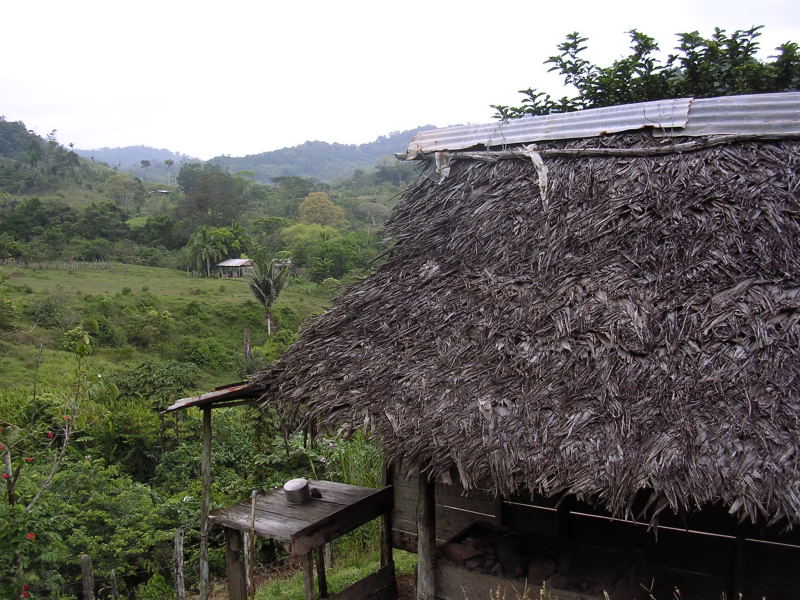
We spent two days at Santos’ farm
in La Rica, going on hikes, and swimming in beautiful waterfalls.
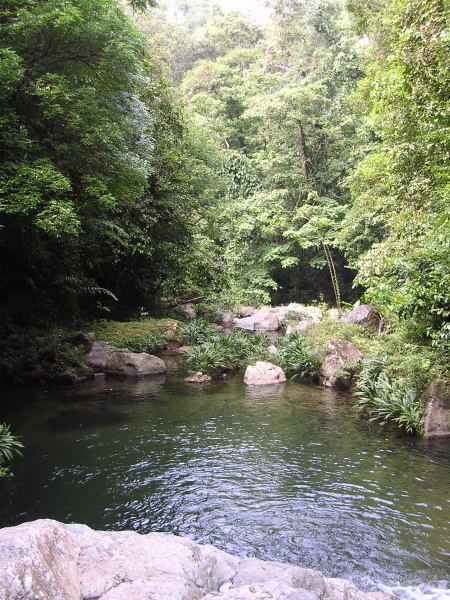
I really liked our time in La Rica because it was such a completely different
part of Panama. Panama seems to
be divided into the Canal Zone, the beach, Kuna Yala,
and the center. I’d never seen “the center” and really enjoyed
getting to see one of the isolated farming towns that isn’t accessible by car
and doesn’t have electricity or indoor plumbing. We all enjoyed eating
traditional Panamanian food and talking to Santos,
who had a lot to say about how Panama
was changing. We also enjoyed the slow pace of breakfast at 7, hike, eat,
swim, siesta, eat dinner at 4, be in bed, asleep by 8.
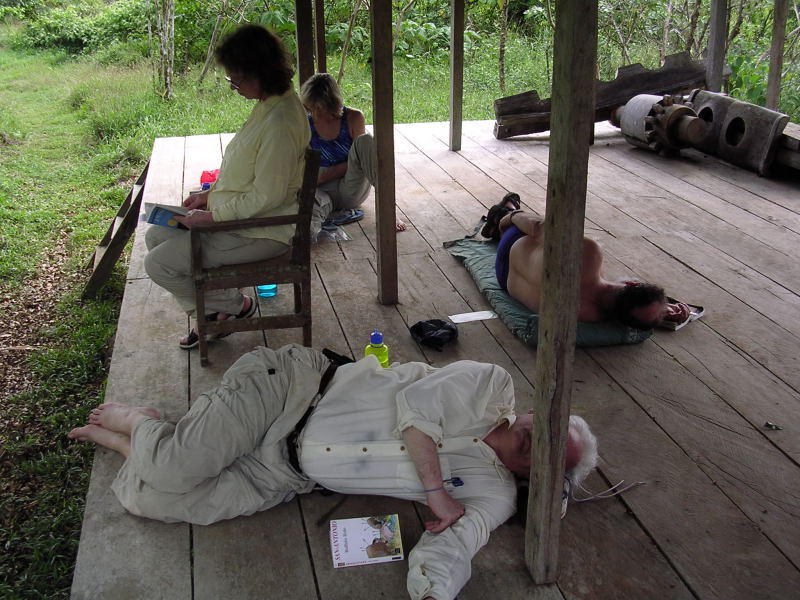
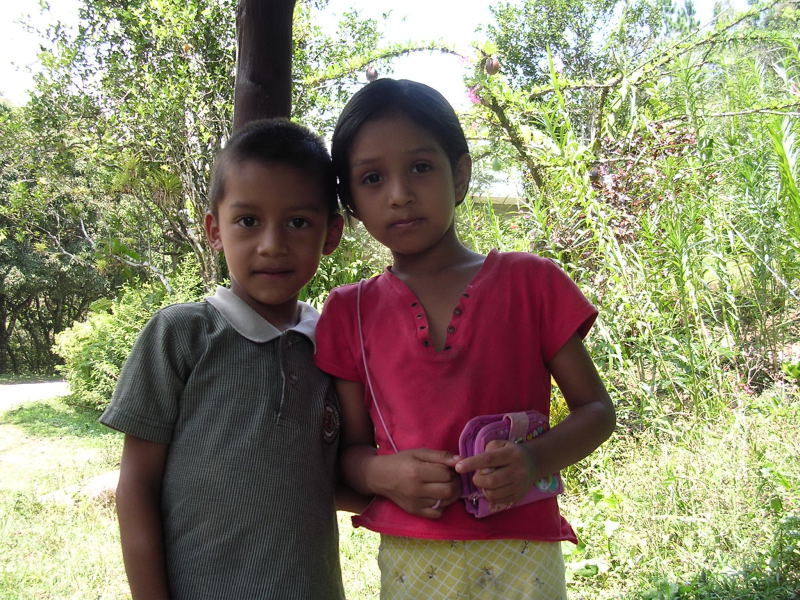
Two of Santos’ grandchildren
After our visit to La Ricca, we headed out to Santa Catalina
on the Pacific coast. This is apparently one of the best places to surf
in Panama.
It is also the place you leave from to get out to Isla Coiba. Coiba is a
large island which has recently been designated a marine and terrestrial
national park. It used to be a penal colony where Panama’s
worst criminals were incarcerated. In recent years, the prison has been
completely shut down, and the ANAM ranger’s station is now the only inhabited
place on the island.
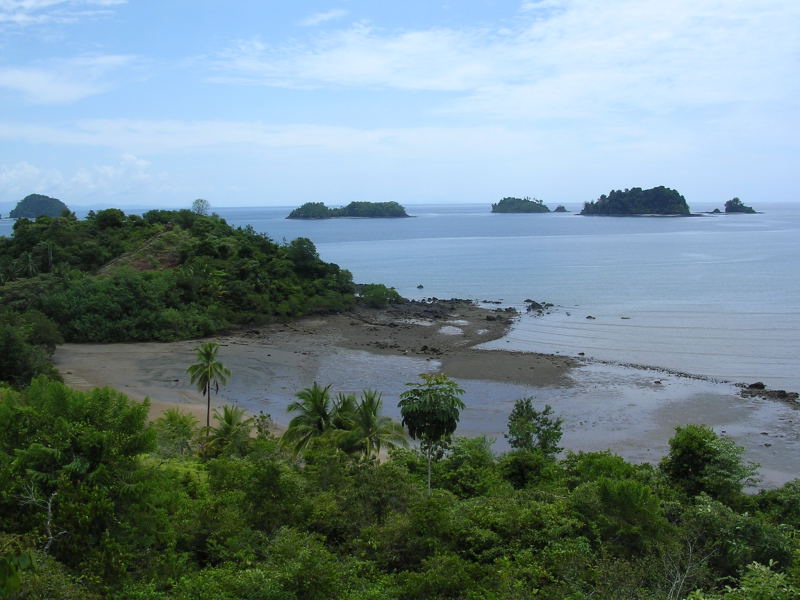
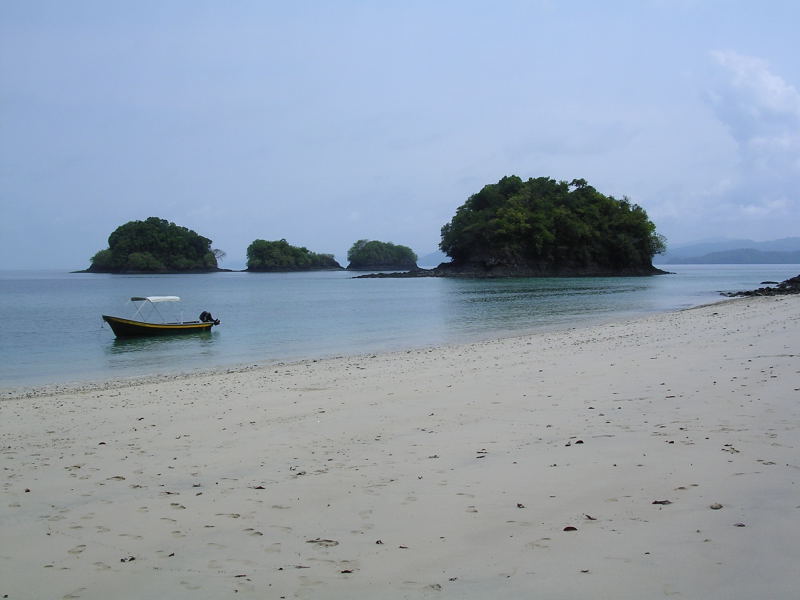
Coiba seems to represent Panama
in general faces as to how to develop tourism. The previous president,
Mireya Moscoso, favored opening it up to development and large hotels. The new
president, Martin Torilljos (son of the former president Omar Torilljos that
the first nation park we visited was named after. He died when his plane
crashed into Cerro Marta–a mountain in the park), seems to be reconsidering
the fate of Coiba. He was actually visiting while we were there. We
didn’t actually see him, but we saw his guards, their guns, and his helicopter
coming and going.
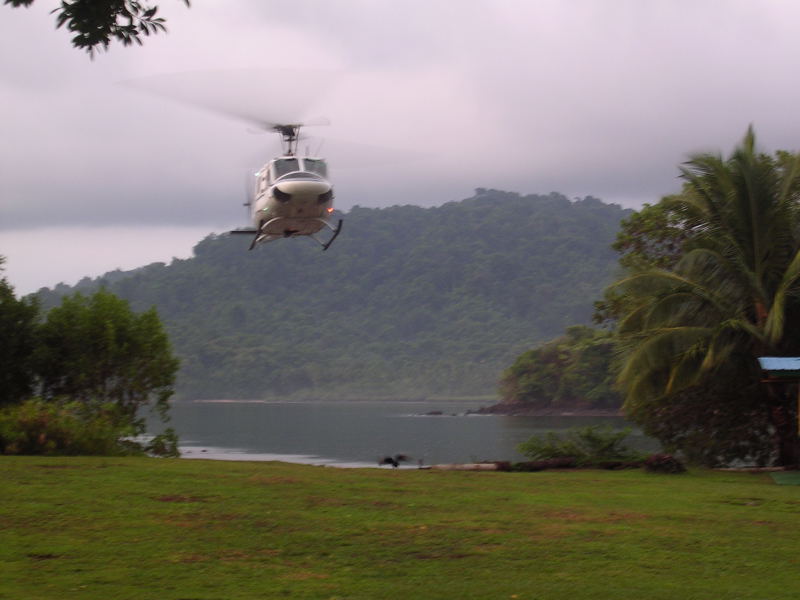
We spent our time in Coiba snorkeling (mom, dad and I) and diving (Steve and
Shelley). The Pacific side doesn’t have nice, colorful coral, but it
didn’t matter a bit. There were huge schools of fish, huge fish, lots of
rays and sharks, barracuda, and sea turtles. I also saw octopus and
spinner dolphins for the first time.
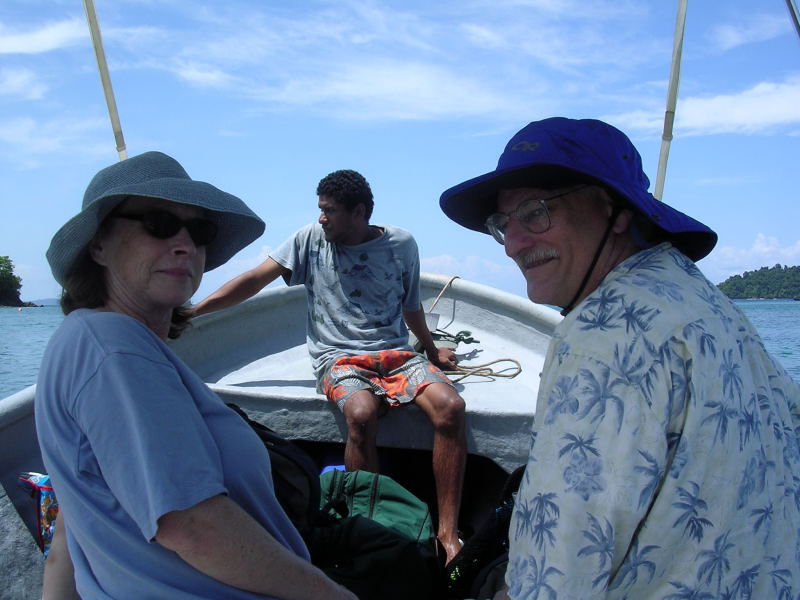
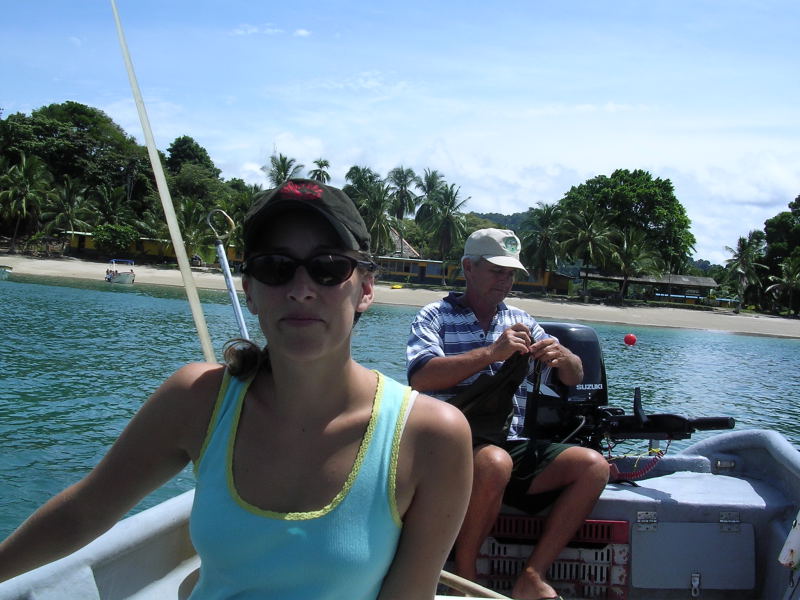
We also experienced the difference between simple but well built, and poorly
designed. La Rica, without electricity or plumbing, was well ventilated,
well planned, and entirely comfortable. The dorms on Coiba were
cinderblock with windows that wouldn’t open, and air-conditioning that didn’t
work. Between the heat and the sand flies, it was nearly impossible to
sleep, which meant that we were all awake to see:
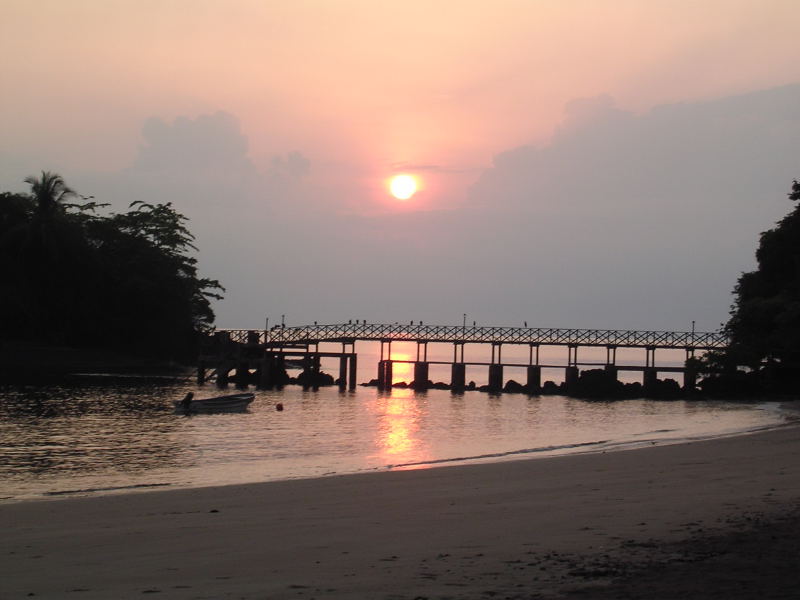
After Coiba, we headed to the northern part of the country, to Chiriqui
province. It was amazing, turning at Concepcion
and heading inland and up, passing from brown pastures with Brahma cattle to
green, luxurious fields with Holsteins. The drive
to Cerro Punta was incredibly beautiful, in a completely different way than
anything we’d seen yet. It was heavily farmed, flowers grew everywhere,
and there were big rushing streams.
“Cloud Forest”
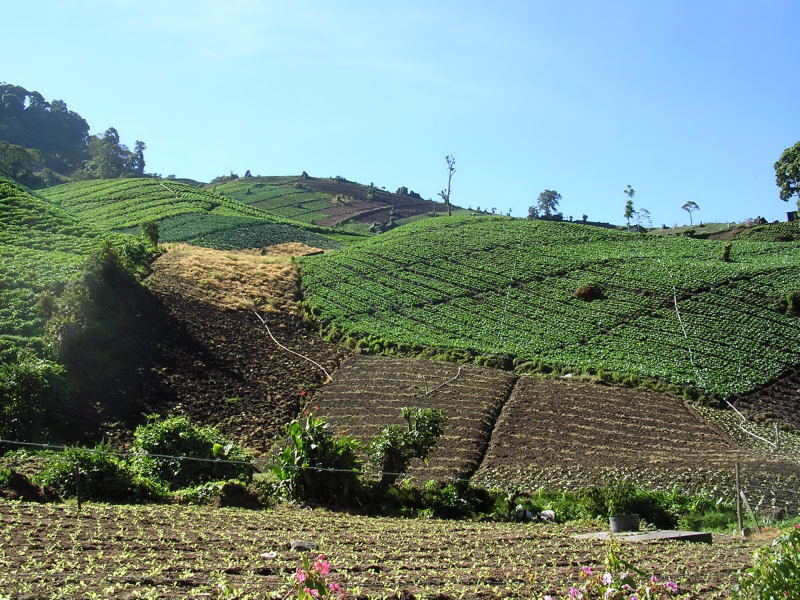

We stayed in cabin in one of the national parks in the area managed by the
hotel Los Quetzales. It had a wood stove (it actually got cold!!!), hot
water (finally), a kitchen, and an amazing patio with a view:
“Cloud Forest 2”
We saw lots of quetzales, which actually are as amazing as people say.
Very hard to get a decent photo, however, so I stopped trying. Almost as
much fun as the quetzales were the hummingbirds around the feeder at the
cabin. If you stood with your hands near the feeder, they would perch on
you while they ate. This is a video of me trying to keep form cracking up
long enough to get a hummingbird to perch on me.
By the time we got to Los Quetzales, we were very happy to be staying in the
same place for a few days. We hiked and saw some beautiful birds, but
also spent a lot of time reading, cooking good food and talking.
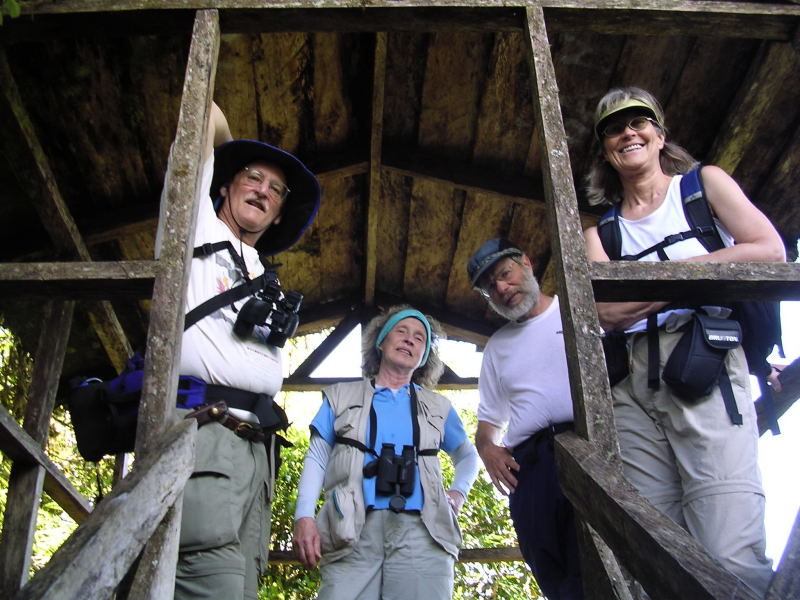
I was completely blown away by how beautiful the cloud forest. It looks
so completely different from the forest I work in. I could have happily
stayed for much longer.
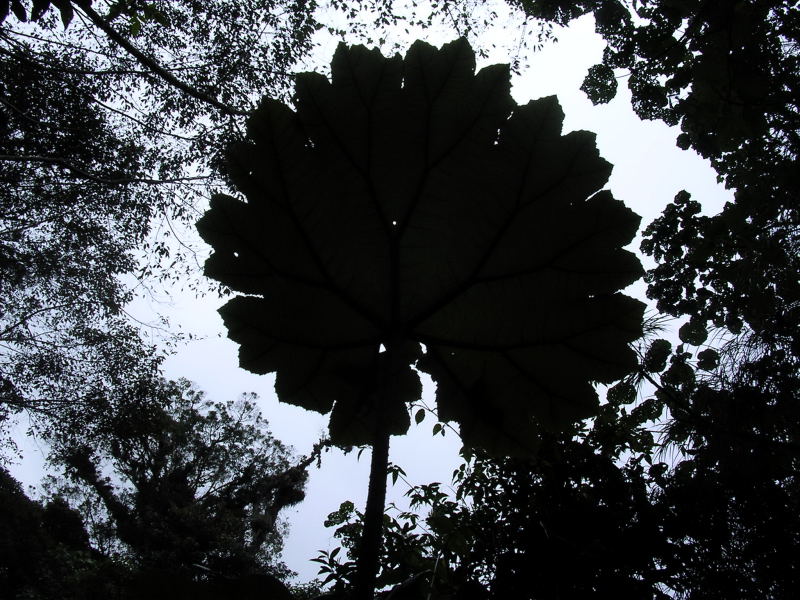
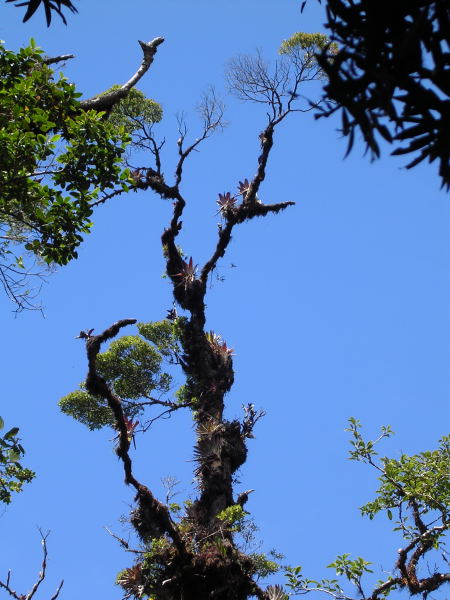
Unfortunately, Los Quetzales was the end of our 3 week vacation. We drove
8 hours back to Panama City, disguised
the crack in the windshield we’d acquired along the way and finally made it to
Crepes and Waffles for dinner and passion fruit ice cream (I think the weeks of
thinking about it, craving it, made it so much better when we finally got it!).
I loved our vacation, and I don’t think I traumatized my parents too
badly. I’m amazed at how few tourists seems to come to Panama.
Pretty much everywhere we went, we were either the only tourists, or there were
only a few others. The national park system is stunning, but poorly
utilized. I’m really looking forward to visiting some of the other parks
that we didn’t get to on the trip later this summer!
April 26, 2005
Locks, stocks and two smoking barrels
It seems like a really long time since I’ve posted anything here, and
there are so many cool things I’ve done in the last couple of months
that it’s hard to figure out where to start. Time seems to be
speeding up now, which is a sure sign that I’m closer to the end of my
time in Panama than the beginning. Supposedly the dry season is
over and the rains are on their way. It certainly seemed like
that two weeks ago, when just about every afternoon seemed to end in a
downpour and I became reacquainted with the meaning of “soaked to the
bone.” Now, however, the weather gods seemed to have changed
their minds. This week has been beautiful, sunny, summer
weather—and I’ve been stuck inside writing a paper and staring out the
window longingly.
Bob Lessnau came back to BCI at the end of February to help me dart and
radio-collar a few more monkeys for my study. This time
around was a whole lot easier than last time. We got five monkeys
with relatively little trauma (either emotional or physical, to us or
them). Interestingly, we only got females this time—the males
just wouldn’t give us a clear shot at their butts. We even seem
to have gotten better at catching the monkeys in the hammocks when they
fall—we only missed two!
Marcos Guerra, a photographer who works with STRI, came out with us one day and took some nice photos.
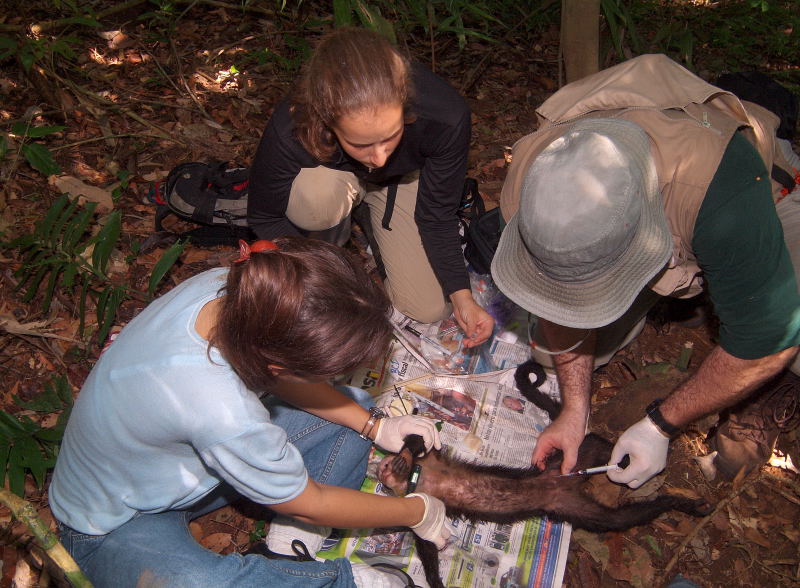

Bob and Claudia drawing blood
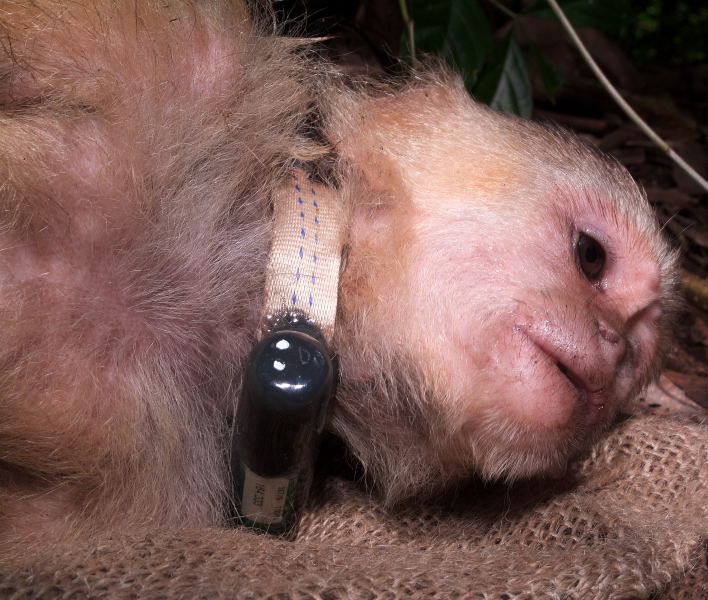
Ella was named after the demon-capuchin monkey from hell in the horror
movie “Monkey Shine”—high quality cinema if I’ve ever seen it.
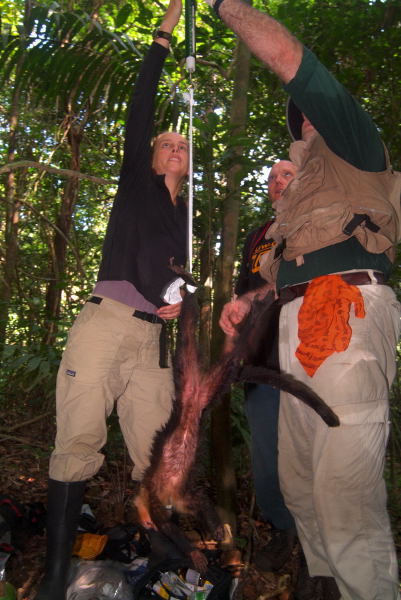
weighing Ella with a Pesola scale. She only weighed 2.2 kg—the smallest female we caught.
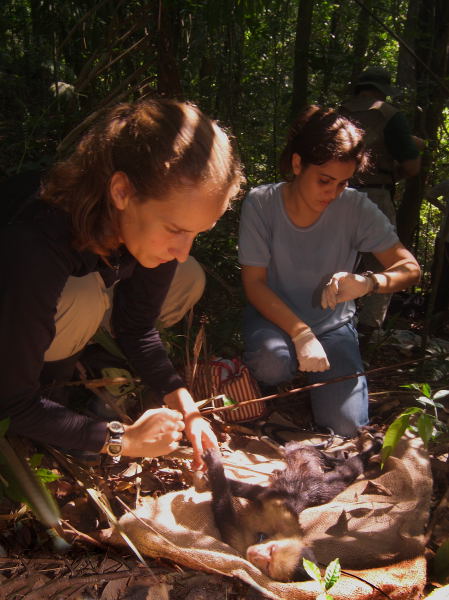
Measuring her arm length

This was the photo they ended up using in the STRI news story about my
research. It took me a while, but I kind of like it.
There was only really one downside to this round of darting: dry
season means ticks. We were all covered head to toe in tick bites
after a day of darting.

A small percentage of my hundreds of tick bites.
This spring, BCI has had its very own Christo to compete with the
beautiful but strange installation in Central Park. Andrea has
been wrapping her greenhouses in shade-cloth, so her seedlings won’t
fry in the sun. Unfortunately, standing on a ladder in the sun
all day long for several days in a row, sewing together strips of shade
cloth may have fried her brain. You can’t say it doesn’t look
pretty.

This juvenile tiger heron has been hanging out around the labs recently too.

I also spent a really fun afternoon last month moored in the lake below
a fruiting fig tree that lots of monkeys were feeding in. Alex

and I took a picnic dinner, watched the howler monkeys and capuchin monkeys gorging themselves

and then after dark got to see kinkajous feeding in the same fig using the ARTS lab’s 3.5 million candle power flashlight!
We also had an adventure driving out to Fort San Lorenzo on the
Caribbean coast—I’m finally 25 and can rent cars!! The first part
of the adventure involved getting lost in downtown Colon (not really
someplace you want to be lost!).
Then we got to drive over one of the Gatun locks
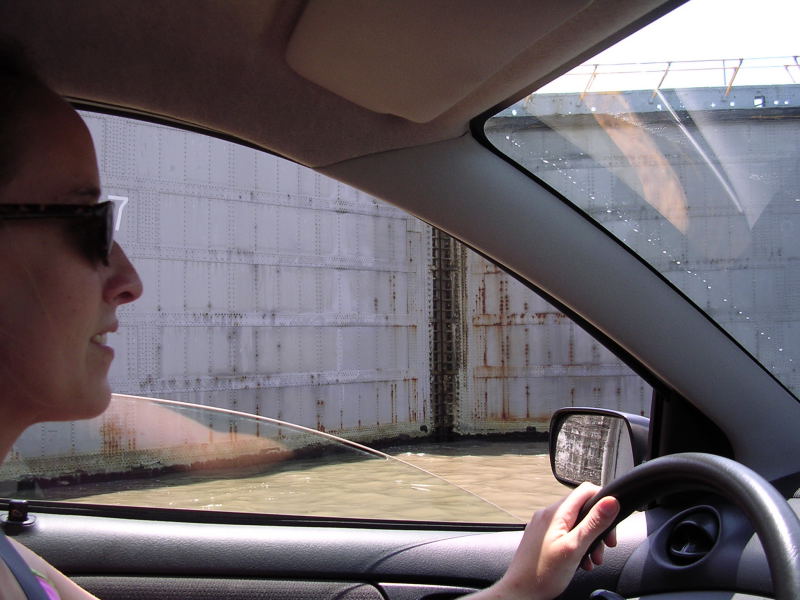
Then came the never ending dirt road. We kept passing signs that
gave the distance to the fort. Except the further we drove, the
further away the fort seemed to get. You’d pass a sign saying 9
km to Fort San Lorenzo, and 10 minutes later the next sign would say it
was 15 km to the fort. (I learned a few weeks later, while
vacationing with my parents, that this kind of confusion about
distances seems to be ubiquitous in Panama). We did finally get
to the fort however, and it was absolutely worth it.
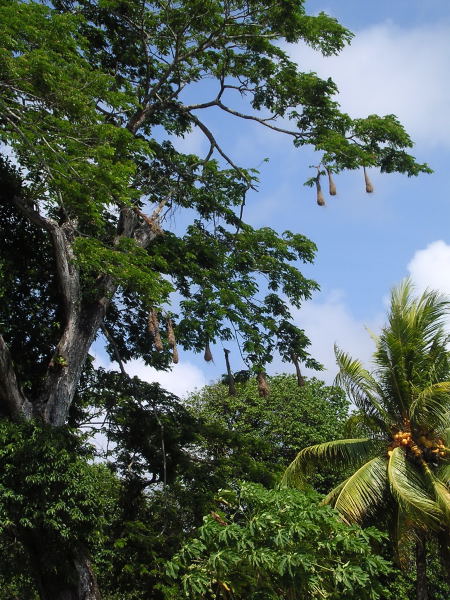
Oropenola nests near Fort San Lorenzo
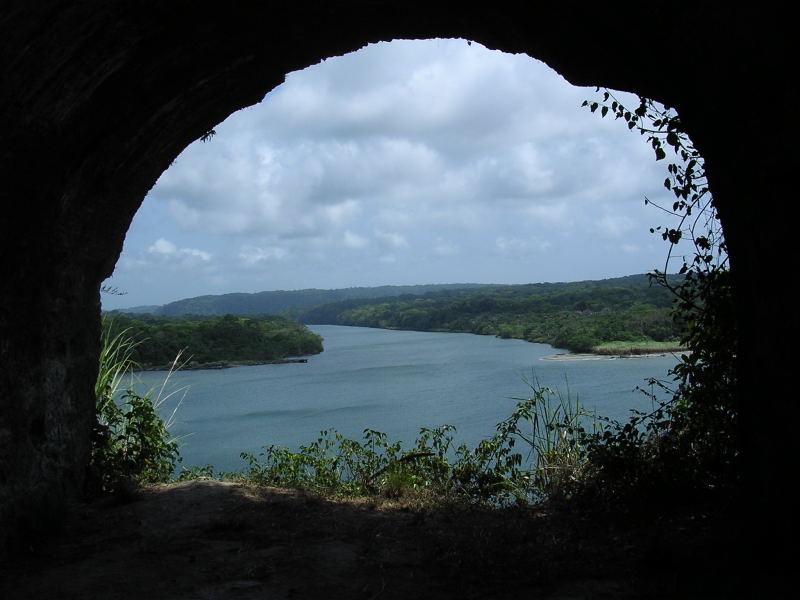
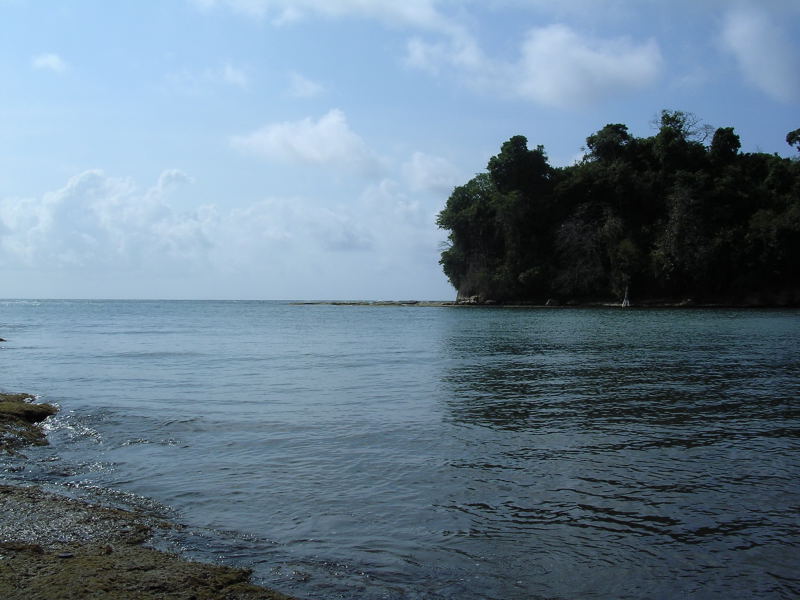
The other really cool thing I did before going on vacation with my
parents was visit the Gatun locks. I had been foolishly blas
Locks, stocks and two smoking barrels
It seems like a really long time since I’ve posted anything
here, and there are so many cool things I’ve done in the last couple of months
that it’s hard to figure out where to start. Time seems to be speeding up now, which is a
sure sign that I’m closer to the end of my time in Panama
than the beginning. Supposedly the dry
season is over and the rains are on their way.
It certainly seemed like that two weeks ago, when just about every
afternoon seemed to end in a downpour and I became reacquainted with the
meaning of “soaked to the bone.” Now,
however, the weather gods seemed to have changed their minds. This week has been beautiful, sunny, summer
weather—and I’ve been stuck inside writing a paper and staring out the window
longingly.
Bob Lessnau came back to BCI at the end of February to help
me dart and radio-collar a few more monkeys for
my study. This time around was a
whole lot easier than last time. We got
five monkeys with relatively little trauma (either emotional or physical, to us
or them). Interestingly, we only got
females this time—the males just wouldn’t give us a clear shot at their
butts. We even seem to have gotten
better at catching the monkeys in the hammocks when they fall—we only missed
two!
Marcos Guerra, a photographer who works with STRI, came out
with us one day and took some nice photos.


Bob and Claudia drawing blood

Ella was named after the demon-capuchin monkey from hell in
the horror movie “Monkey Shine”—high quality cinema if I’ve ever seen it.
“weighing Claudia”
weighing Ella with a Pesola scale. She only weighed 2.2 kg—the smallest female
we caught.

Measuring her arm length

This was the photo they ended up using in the STRI news
story about my research. It took me a
while, but I kind of like it.
There was only really one downside to this round of
darting: dry season means ticks. We were all covered head to toe in tick bites
after a day of darting.

A small percentage of my hundreds of tick bites.
This spring, BCI has had its very own Christo to compete
with the beautiful but strange installation in Central Park. Andrea has been wrapping her greenhouses in
shade-cloth, so her seedlings won’t fry in the sun. Unfortunately, standing on a ladder in the
sun all day long for several days in a row, sewing together strips of shade
cloth may have fried her brain. You can’t
say it doesn’t look pretty.

This juvenile tiger heron has been hanging out around the
labs recently too.

I also spent a really fun afternoon last month moored in the
lake below a fruiting fig tree that lots of monkeys were feeding in. Alex :

and I took a picnic dinner, watched the howler monkeys and
capuchin monkeys gorging themselves

and then after dark got to see kinkajous feeding in the same
fig using the ARTS lab’s 3.5 million candle power flashlight!
We also had an adventure driving out to Fort San Lorenzo on the Caribbean
coast—I’m finally 25 and can rent cars!!
The first part of the adventure involved getting lost in downtown Colon (not really someplace you want to be lost!).
Then we got to drive over one of the Gatun locks

Then came the never ending dirt road. We kept passing signs that gave the distance
to the fort. Except the further we
drove, the further away the fort seemed to get.
You’d pass a sign saying 9 km to Fort San Lorenzo, and 10 minutes later
the next sign would say it was 15 km to the fort. (I learned a few weeks later, while
vacationing with my parents, that this kind of confusion about distances seems
to be ubiquitous in Panama). We did finally get to the fort however, and
it was absolutely worth it.

Oropenola nests near Fort San Lorenzo

The other really cool thing I did before going on vacation
with my parents was visit the Gatun locks.
I had been foolishly blas
February 17, 2005
Nesting crocs and killer snaks
First off, a few more photos of the Chiva from my
birthday. These are from Axel Haensson
(it was also his birthday/leaving Panama
party)

“Chiva group”
“Chiva dancing”

It has been an exciting last
couple of weeks. Santa
Maria, the last radio-collared agouti that hadn’t been
eaten disappeared off the ARTS system.
None of the towers were picking up her radio-collar, and we had been
debating whether we thought the radio-collar had malfunctioned or if she had
been eaten. Then early last week, one of the towers started to pick up her
collar again, at a very low signal strength and constant direction. This meant that she was probably dead, and we
needed to go recover her radio-collar, and whatever was left of her. Santa Maria
had been a survivor, living over a year since she had been radio-collared. When we finally did pick up her signal with a
hand-held antenna and receiver, it was on mortality mode—the signal pulses were
faster than in normal mode. The collars
are designed so that if they don’t move for a predetermined amount of time,
they start emitting this mortality signal.
(This proved problematic when a sloth was radio-collared, and started
emitting the mortality signal within 1 day even though it wasn’t dead because
it hadn’t moved enough).
Tom did find Santa
Maria’s radio-collar, along with a matted ball of fur
and some claws. He interpreted this to
mean that she had been eaten by a snake, because snakes can apparently digest
everything except hair and nails.

I also found the remains of a
sloth while walking my fruit census.
Like with Santa Maria, there
was a lot of fur, and some claws, but no bones.
I guess this means that we have at least one large snake on the island,
although no one has seen any really large boas in a really long time.

Because there is a lot more wind
in the dry season, a lot of the wind dispersed plants fruit at this time of
year. There have been a lot of really
cool seeds floating around, including those of Tachegallia—the suicide
tree. This species is really cool
because it is a big, canopy tree that grows for decades, maybe even centuries,
never fruiting. One year, once it has
become enormous, it flowers, produces thousands of wind dispersed seeds, and
then dies.

These are some of the fruits that
I found on my most recent fruit census.
The large green one on the bottom is Sterculia apetala. On the inside are a bunch of round seeds
about 1 cm in diameter, which are surrounded by fiber-glass like hairs. When you try to pick the seeds out of the
capsule, these hairs stab you, and you end up with hundreds of them stuck in
your hands, which actually hurts quite a lot.
The capuchins, however, don’t seem to be bothered very much by these
silica-hairs. They break open the
capsules and eat the seeds without thinking twice about it. Sterculia reminds me a lot of the Neesia
fruit that grows in the peat swamps in Borneo. Neesia also has fiber-glass like hairs
protecting its seeds, and when orangutans eat it, they use sticks as tools to
avoid getting the hairs stuck in their hands.
There are also two species of
Virola which are starting to drop fruit.
This is the red fruit in the green capsule on the right side of the
photo. It is a relative of nutmeg. The white flower in the middle is from a
pseudobombax tree, and the brown fuzzy thing at the top is in the same genus as
the monkey-comb that I’ve talked about before (Apeiba). The capuchins are eating Lacmaellea (the
yellow fruit), and Chrysophyllum (the purple fruit below the yellow fruit)
right now, both of which taste pretty good.
I also found this enormous seed
pod in the field the other day!

This Ochroma (balsa tree) in the
lab clearing has been flowering for the last month, which has been really neat
because all kinds of animals eat its nectar.
One of the capuchin groups I study has been visiting at least once a day
to feed. Some nights they sleep right in
front of my room, and feed in the Ochroma both in the early mornings and late
afternoons. Kinkajous, medium sized
nocturnal mammals, also eat balsa nectar, and we’ve been going out at night
with large spot lights to see them. There is also a a large potoo that has been
hanging out near the balsa tree. Potoos
are large, nocturnal birds that look a bit like owls, but have an absolutely
blood freezing cry. One kinkajou
researcher who worked alone at night in the forest apparently comforted himself
after hearing a potoo call by saying “that sounds like a monster. . .but there
are no monsters in Panama.” It has also
been really interesting because several people looking for the kinkajous have
seen capuchin monkeys feeding in the Ochroma in the middle of the night. I should be able to use the ARTS data to look
at how often the capuchins are active after dark, and whether this correlates
with food availability.

I had some really forgetful
moments this month. After having an hour
of computer problems as I tried to print out data sheets, including multiple
phone calls between myself and the computer technicians in Panama
City, I finally got out to the forest and found my
monkey group, only to realize that I had left my clipboard, with newly printed
data sheets, in the lab. This was my
solution, and in retrospect, I think it looks kind of cool.

The other cool thing that has been
going on is that three crocodiles have laid eggs on the shore along the lab
clearing, so we’ve been seeing a lot of them.

“croc2”
These are just some cool things
that I saw on a walk yesterday:


It is a big week coming up for
me. Saturday is carnivalito—the island
celebration of Carnival. Unfortunately
I’m not going to be able to play as much as I’d like, because Bob Lessnau
arrives that day to help me radio-collar a few more monkeys. Its going to be a crazy week, and hopefully
I’ll have some interesting photos to share with you.